


Sundar R


Vakeeswari M
DESIGN


D Rajaram, Tayub Refai









Sundar R


Vakeeswari M
DESIGN


D Rajaram, Tayub Refai





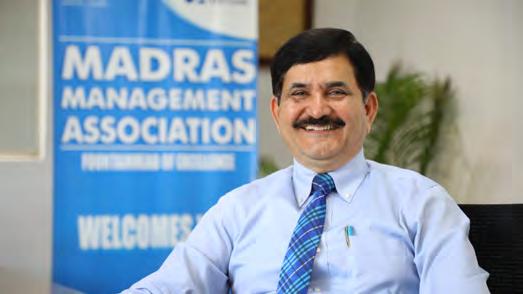
Water is paramount for economic development, but related issues concerning consumption are worrisome. Climate change is disrupting the consumption pattern, hitting even agriculture which consumes over 80% of India’s fresh water. By 2030, India will only have 50% of the water it needs. This crisis is likely to be the worst in India’s history and will disproportionately impact agriculture and other areas. India’s water crisis is a ticking time bomb. I strongly believe that the benefits derived from small water bodies are enormous. They are found in all parts of the country, and are easily accessible and manageable. In this context, MMA is organizing a seminar on, ‘How to make India water resilient?’ in association with Sundaram Climate Institute (SCI) and KAS on Thursday, 11 May 2023. The studies compiled by SCI reveal how deep and unequal the crisis is, how it will become far worse if we do nothing, and what solutions are likely to work. By
The studies compiled by SCI re‐veal how deep and unequal the crisis is, how it will become far worse if we do nothing, and what solutions are likely to work.
prioritizing sustainable and equitable water management policies and practices, we can ensure that water resources can be managed effectively and fairly for generations to come.
The new foreign trade policy (FTP) came into force on 1 April 2023. The objective is to formulate, implement and monitor trade policies to boost exports, facilitate imports and maintain a favorable balance of
payments. The Government has also done away with the conventional practice of setting a five-year cycle. The new policy is intended to be responsive to changing circumstances and will be modified as and when required. Additionally, the Government will also consistently gather input from relevant stake holders to enhance and revise the policy as required. The Government’s endeavor is to increase India’s overall export to $2 trillion by 2030, with equal contributions from the merchandise and services sector.
In this context MMA, KAS, FIEO and DGFT organized a seminar on ‘Implementing Foreign Trade Policy 2023.’ Senior Officials from FIEO and DGFT shared insights on changes in the Foreign Trade Policy for the benefit of participants.
Click here to watch the recording of the seminar.
We have surpassed China to become the world’s most populous country. It is a cause for neither celebration nor dismay. Despite the population boom over the past many decades, the birth rate in the country is dropping sharply enough for stability to be attained. The challenge now is to ensure that our people add up to national strength rather than weakness. We still have too many people adding too little value to the economy, an issue we can only solve if we could develop a significantly wider skill that can be gainfully employed.
This can be achieved only by focusing on basic health care and providing high quality education for all. Even today, huge gaps result in large a number of our population being left out. India must close these gaps to realize its demographic dividend or it would become a demographic disaster.
MMA - KAS in association with FICCI FLO is organizing a presentation by Mr Suresh Sambandam, Founder and CEO, OrangeScape (Kissflow), on Monday 8 May 2023. Suresh now dreams of making his company at least one of the top three in the world in its category. He will also share his insights on India’s cloud software sector and why he believes that it can really deliver a trillion dollars in value. Please join us in person at MMA.
Dr V Mohan is a renowned diabetologist and endocrinologist who has dedicated his career to studying and treating diabetes and its related conditions. He addressed the members of MMA on 04 April 2023 and shared his tips for maintaining good health and preventing chronic diseases. He emphasized on maintaining healthy diet, regular exercise, avoid smoking, get good sleep and manage stress.
He reiterated that adopting a healthy lifestyle by following the tips shared by him can go a long way in preventing chronic diseases and maintaining good health. It is important to note that these tips are general guidelines and may not apply to everyone, so it is best to consult with a healthcare provider before making any significant lifestyle changes. The transcript of his talk is published in this issue with embedded video. Kindly read on and watch the video to lead a
We have surpassed China to become the world’s most populous country. It is a cause for neither celebration nor dismay.
healthy life.
A thought provoking discussion on the theme of the book ‘Influence: The Psychology of Persuasion,’ by Robert B Cialdini was held on 21 April 2023, featuring experts from various fields, such as marketing, psychology and business. The discussion centered around six principles of persuasion outlined by Cialdini in his book. These principles include reciprocity, commitment and consistency, social proof, authority, liking and scarcity.
The panellists discussed how these principles can be applied in various contexts relevant to their respective domain to influence people's behaviour. They also discussed the ethical implications of using these principles and the importance of using them responsibly. I am delighted to present transcript of the discussion in this issue with embedded video. Please read on and watch the video to enhance your power of persuasion.
The Union cabinet approved Rs. 6,000/- Crores for National Quantum Mission (NQM) to develop quantum computers and scale up research and development in
quantum technologies.

Quantum computers are believed to be 100 million times faster than even the most advanced Supercomputers. Quantum computing can accelerate research in areas from health to finance. The fund will support technical and research institutions to collaborate with startups and other firms for developing quantum computing and applications. It is a great step in the right direction to achieve the $5 Trillion economy.
In the past few days, COVID cases are marginally on the rise. Indian health authorities have rightly gone into preparatory mode in case COVID break out of its endemic pattern and pose a big threat again. Since this is not a serious threat, nobody should overreact: COVID will always be with us. So watch out and take care!
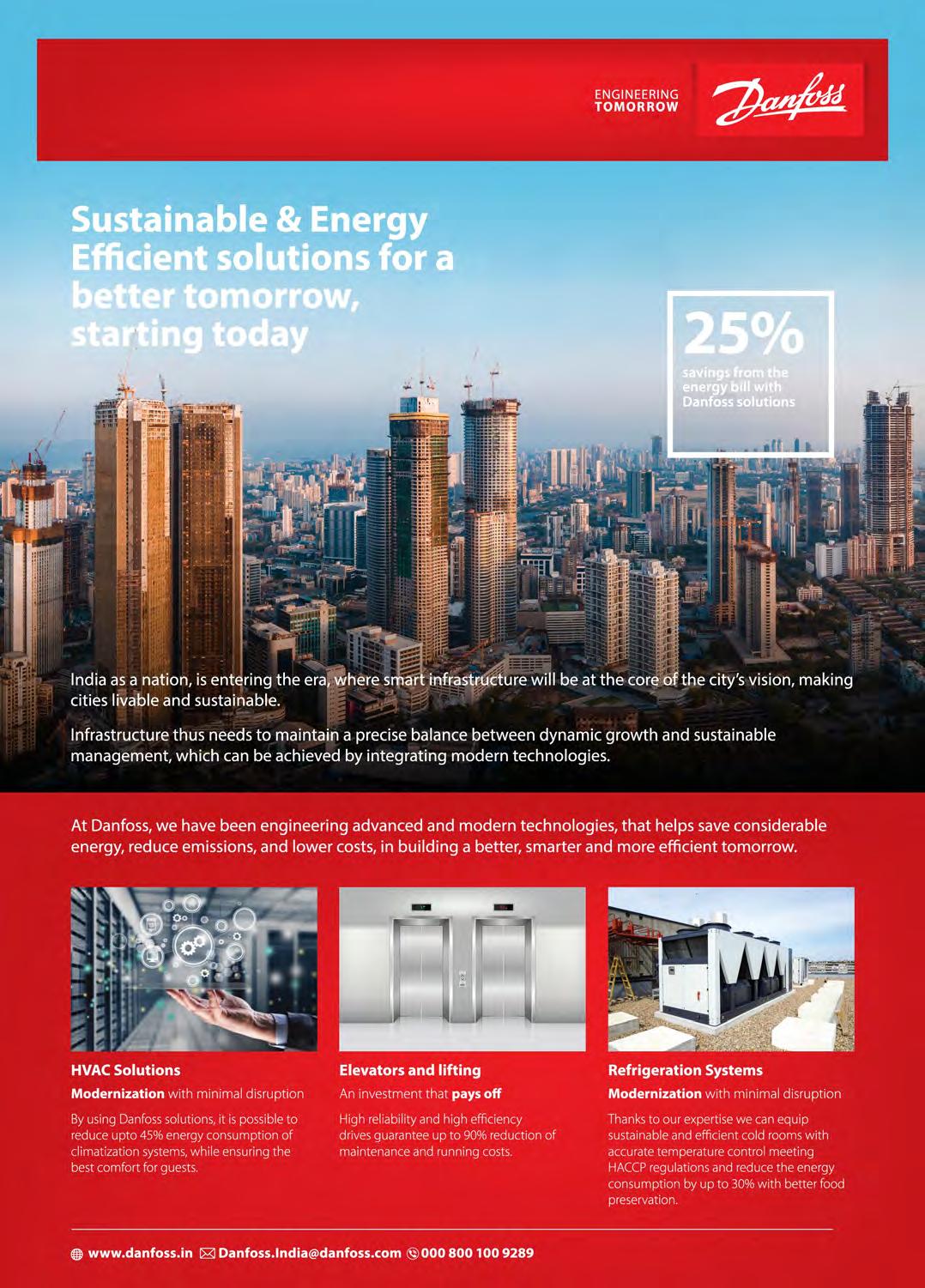
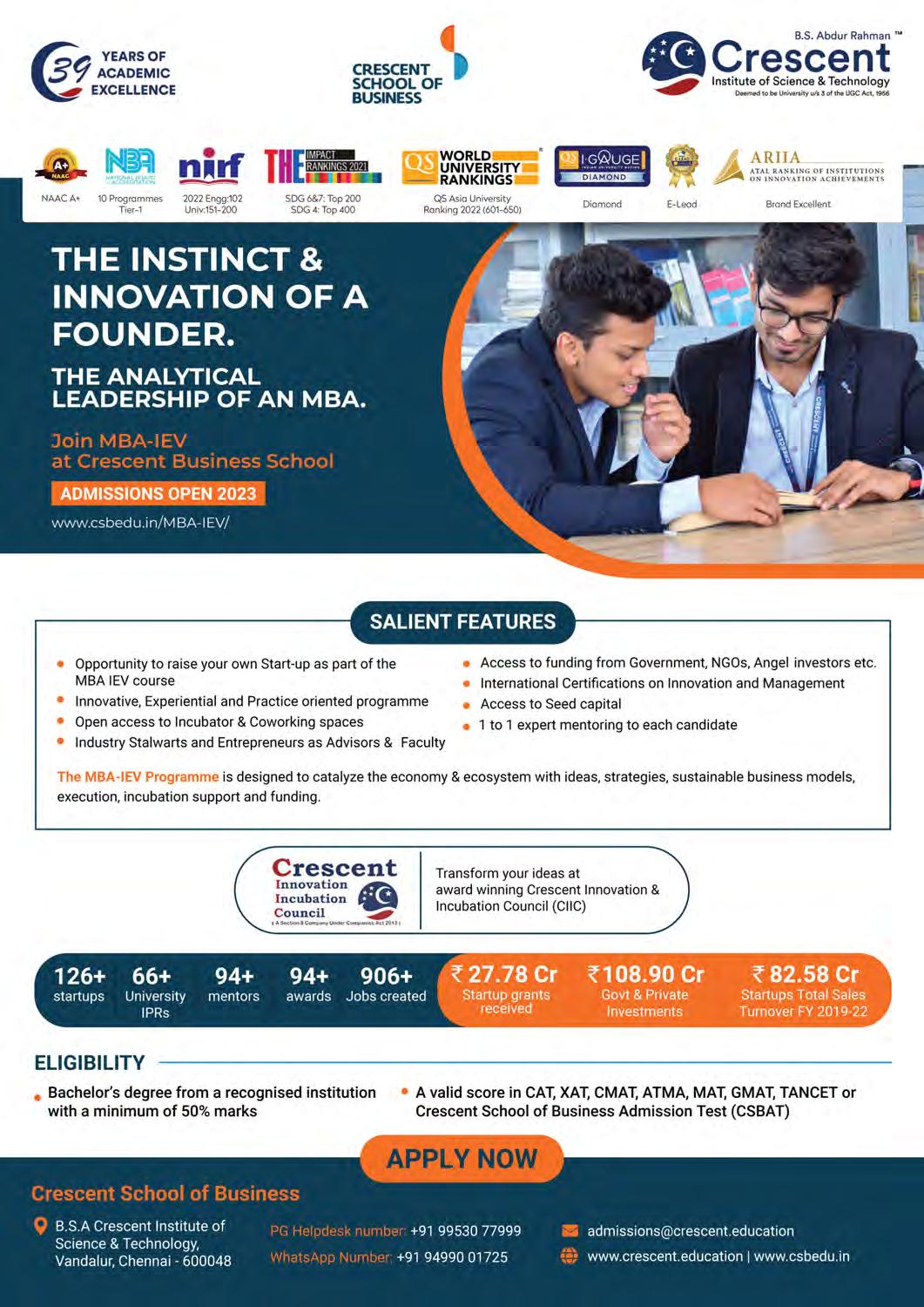
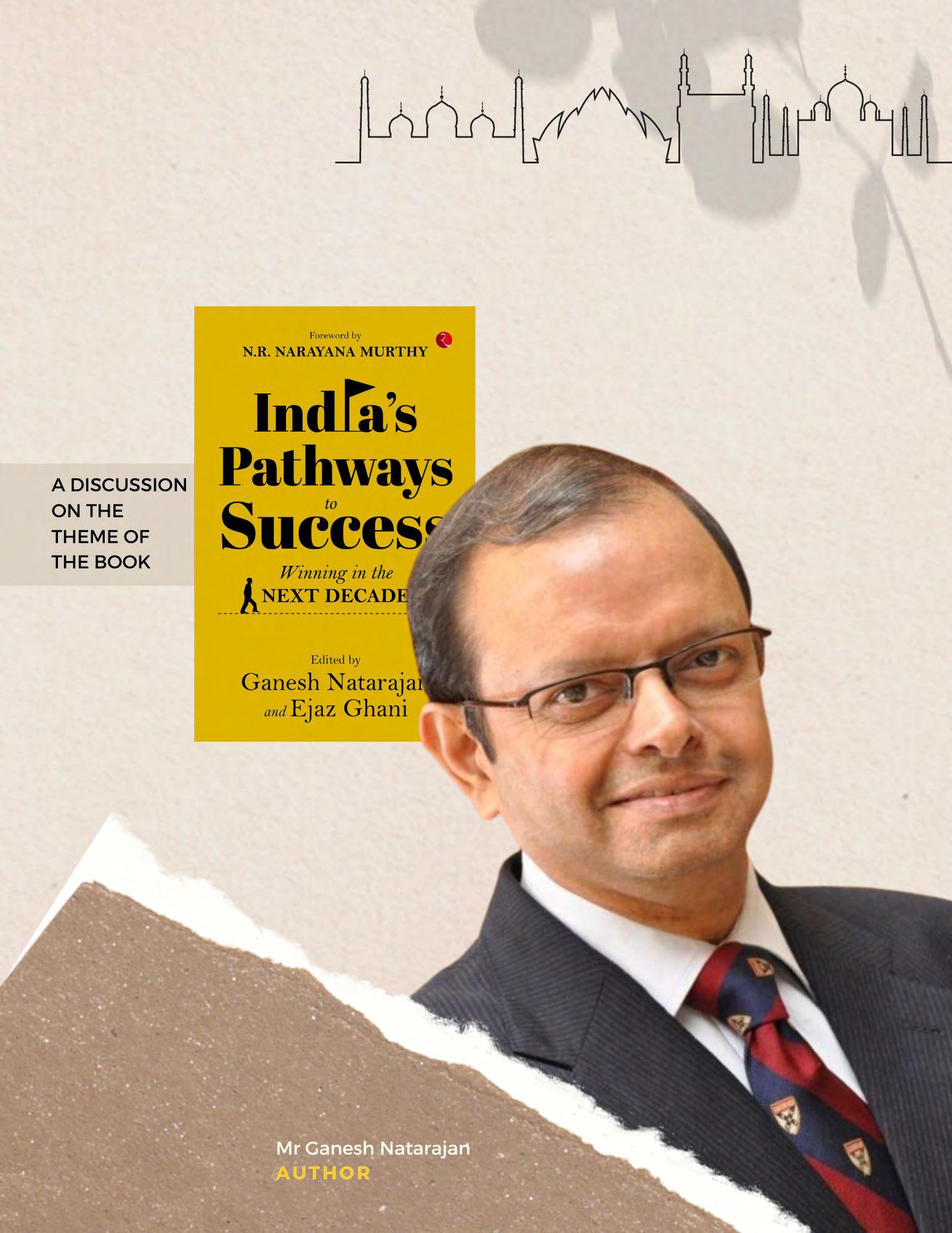
We must look at where India lives and how to
Where does India stand today economically, socially and politically, 75 years after Independence? Where should it aspire to go from here in the next 25 years as it touches the milestone of 100 years of Independence in 2047?
Mr Ganesh Natarajan, Author
India at 75 is a mixed bag of many missed opportunities as well as many successes. If India has to be a true success story without any hype, what are the pathways to make that happen? We did six months of research on where we are. The bad news is, 60 crore Indians still languish in a fair amount of poverty. We are lagging in health, clean fuel and multiple other areas. There's also a concern that keeps popping up: Are we truly a collaborative liberal democracy? Does everybody have an equal voice? When we look at the positive side, one thing that India can be
justifiably proud of is its digital economy. The Digital India opportunity is a trillion dollar by itself—not just the UPI, Jandhan, Aadhar and mobile. We also found a lot of improvements and initiatives in the national education policy. In the recent budget, we have seen a huge focus on infrastructure. The work that is happening on roads and railways is very substantial. Then we picked particularly five or six sectors to focus on how India can build purpose.
The first is, the economy itself. If you look at the three large economic contributors, which is agriculture, manufacturing, and services, India is proud of the fact that we are very strong as a services economy, but it's not adequate. The entire technology industry today gives jobs to 53 lakh people. When seven crore people will be looking for jobs in the next seven years, we are far behind. So clearly, the manufacturing economy has to grow up. Thanks to the productivity-linked incentive (PLI) schemes, areas like specialty steels, food products
put everybody to work
and electronics are really scaling up. That's really good news. We are now the fifth largest economy in the world and will become the third largest by 2028 or 2030. But just economic parameters for a population of 140 crores, is not enough. We must look at other enablers. Agriculture has to be much more productive. 52% of our country is engaged in agriculture, contributing less than 20% of GDP. Services have to move from largely concentrated in 10 to 12 cities to a more widespread level, across 3000 cities and towns. This means that a certain amount of reverse urbanization has to take place. For instance, in Bangalore traffic, we literally crawl. This is true in Delhi, Mumbai and even Pune where I live. So, urbanization has to be put under a microscope.
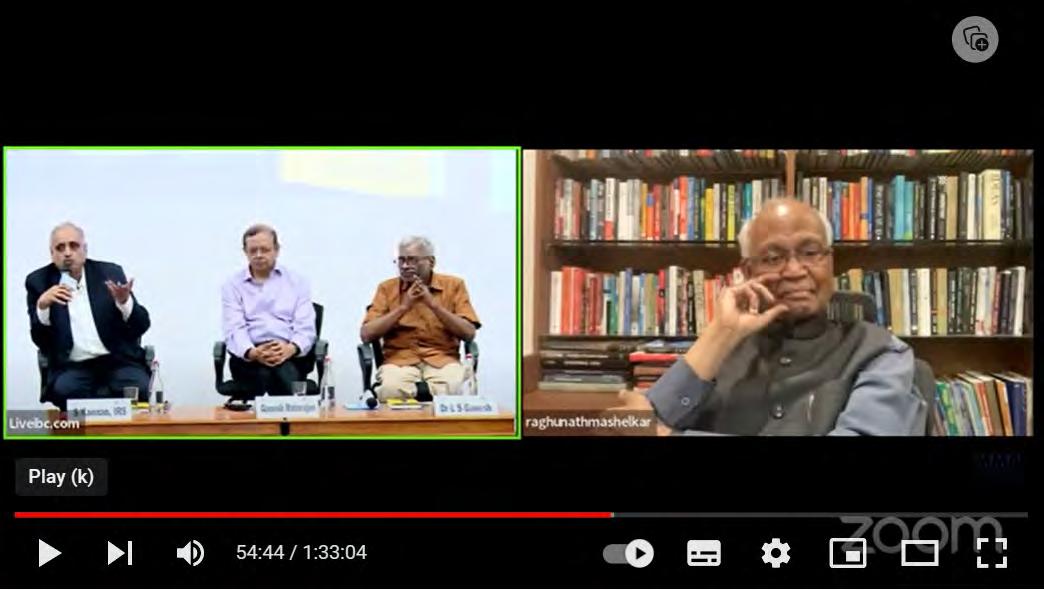
The second thing we're looking at is mobility. Thanks to Covid, instead of people having to get onto buses or vehicles to come to office, they are working from home—if not all the time, a large portion of the
time. That's an advantage. We're also seeing a large investment in the green economy. Green jobs are being created. I chair the government of India's initiative, ACES —Autonomous, Connected, Electric and Shared vehicles. It is going to change the pace of work. Today, we find that trade is no longer restricted to large trade organizations like WTO. We talk a lot about bilateral trade. Vietnam has succeeded in really being the China
Services have to move from largely concentrated in 10 to 12 cities to a more widespread level, across 3000 cities and towns. This means that a certain amount of reverse urbanization has to take place.
plus one, by just making multiple trade deals with everybody in ASEAN. India also has an opportunity if we really build bilateral relationships with 20 to 30 large countries and that will boost our exports.
Another very critical issue is women's participation in the economy. I serve on the board of an entity called ‘Educate Girls,’ which works with tribal girls in Madhya Pradesh, Rajasthan, UP and Bihar. Most tribal children dropped out of school during Covid; you may be shocked to note that 70% of the girls who dropped out in those areas, have not gone back to school. This is a disaster waiting to happen, because it means that they're now working in the farms or at homes and are not getting educated.
The next focus area is our investments in science, technology and innovation.
To summarise, the key sectors are agriculture, manufacturing and services. We must take care of the enablers. We must look at where India lives and how to put everybody to work—not just the youth of the country but also the women to work, wherever they want to work. We must also focus on futuristic thinking using of STI (Science, Technology and Innovation). Then, we will get a much better record.

I'm extremely proud of Indian science. 2020 was a year of pandemic but it was also a year of science. It was a year of Indian science. When the pandemic arrived, we had no diagnostics. We had no vaccines, no therapeutics, no understanding of the basic virus. And our scientists were so fantastic that they delivered it all. We talk about 200 crore plus jabs. But where did they come from? Covaxin was developed by Krishna Ella of Bharat Biotech and you can see what difference it has made. It is a totally indigenous product. All these came about because of the deep investment that we have done in science over decades. It did not happen overnight. That's just one example to show how important science is and how science actually delivers to the nation. Science solves; technology transforms;
When
Ours was denial‐driven innovation.
we could not get a supercomputer, we developed our own C‐DAC. When we were denied cryogenic engine technology, we said, ‘Thank you very much,’ and developed our own cryogenic engine.
The key sectors are agriculture, manufacturing and services. We must take care of the enablers. We must look at where India lives and how to put everybody to work...
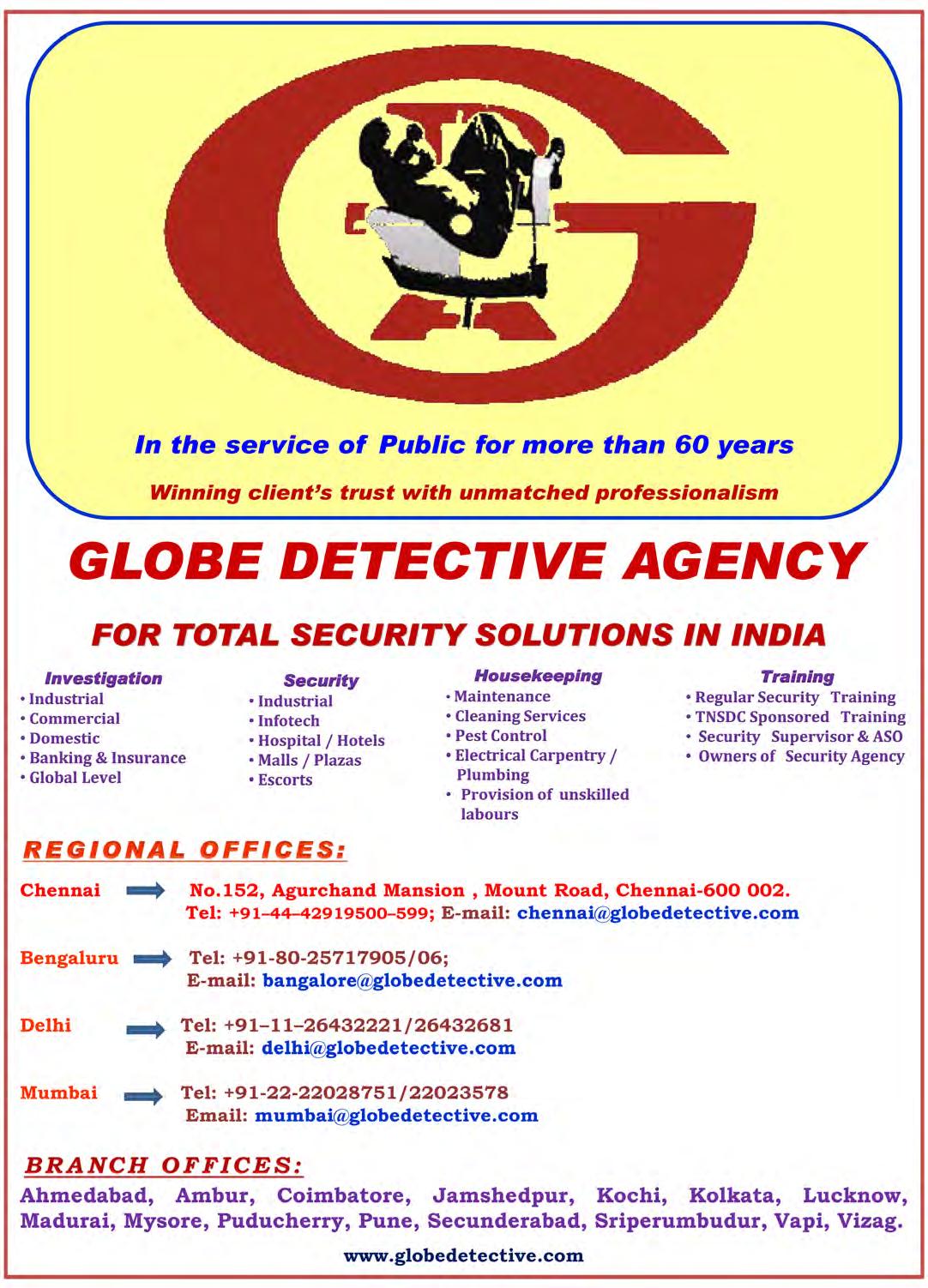
and innovation creates an impact. We must take an integral view of all this. We must recall the history of how we grew. As a poor country, we had to do lots of things on our own and technologies were not very easily available. Our techno nationalism really drove the initial part of our development.
Ours was denial-driven innovation. When we could not get a supercomputer, we developed our own C-DAC. When we were denied cryogenic engine technology, we said, ‘Thank you very much,’ and developed our own cryogenic engine. We were denied technology connected with nuclear energy, and we developed our own. That denial also came by some of the things that we selfmade. For example, we were a completely closed economy and we did not open to the world economy. It was only in 1991, that we actually opened up to competition. It is competition which drives innovation. Otherwise, it is all inhibition and imitation. So, we're late starters in that aspect.
In innovation, inclusive innovation is very important for us. Even today, we talk about India at 75. Nobody talks about Bharat at 75. Inclusive innovation has the definition of giving access equality, despite income inequality. It is not regarding getting less from
less, making some or the other happen, but making high technology work for the poor. Making high technology work for the rich is very easy. Making low technology work for the poor is also very easy, but making high technology work for the poor is very difficult.
Just to give an example, I have instituted an award in my mother's name—Anjani Mashelkar Inclusive Innovation Award. I'm not a great believer in best practice; I'm a believer in next practice which will become the best practice for others. I hate copying. This is the 12th year of the award and it’s amazing what young people have been able to do in their late 20s. For example, detecting breast cancer is a painful process and it is expensive. Mihir Shah, one of the awardees, has developed an ultra low-cost portable device to screen women for breast cancer and which costs just $1 to do the test. It is going to 25 countries now in partnership with GE Healthcare. It's an incredible technology and completely non-invasive. We have also developed a portable ECG. You don't have to go and lie down and then have the 12 leads connected. In a simple process and in less than five minutes, you can get your ECG. It has gone to eight countries and about a quarter million of these devices have been sold. These are all about getting more from less. That is the speciality of India—creating affordable excellence.
The other good news is that India has become a research and development hub. In 1995, I had given a talk about India's emergence as a global R&D. At that time, Dr.Manmohan Singh was the finance minister. Nobody then believed me. I was talking about Indian talent and the intellectual capital per dollar that we can create. Indian IQ generates IP for the world. In fact, some companies generate one-third of their global IP from Indian talent. The faith in our Indian talent is the base.
In innovation, inclusive innovation is very important for us. Even today, we talk about India at 75. Nobody talks about Bharat at 75. Inclusive innovation has the definition of giving access equality, despite income inequality.
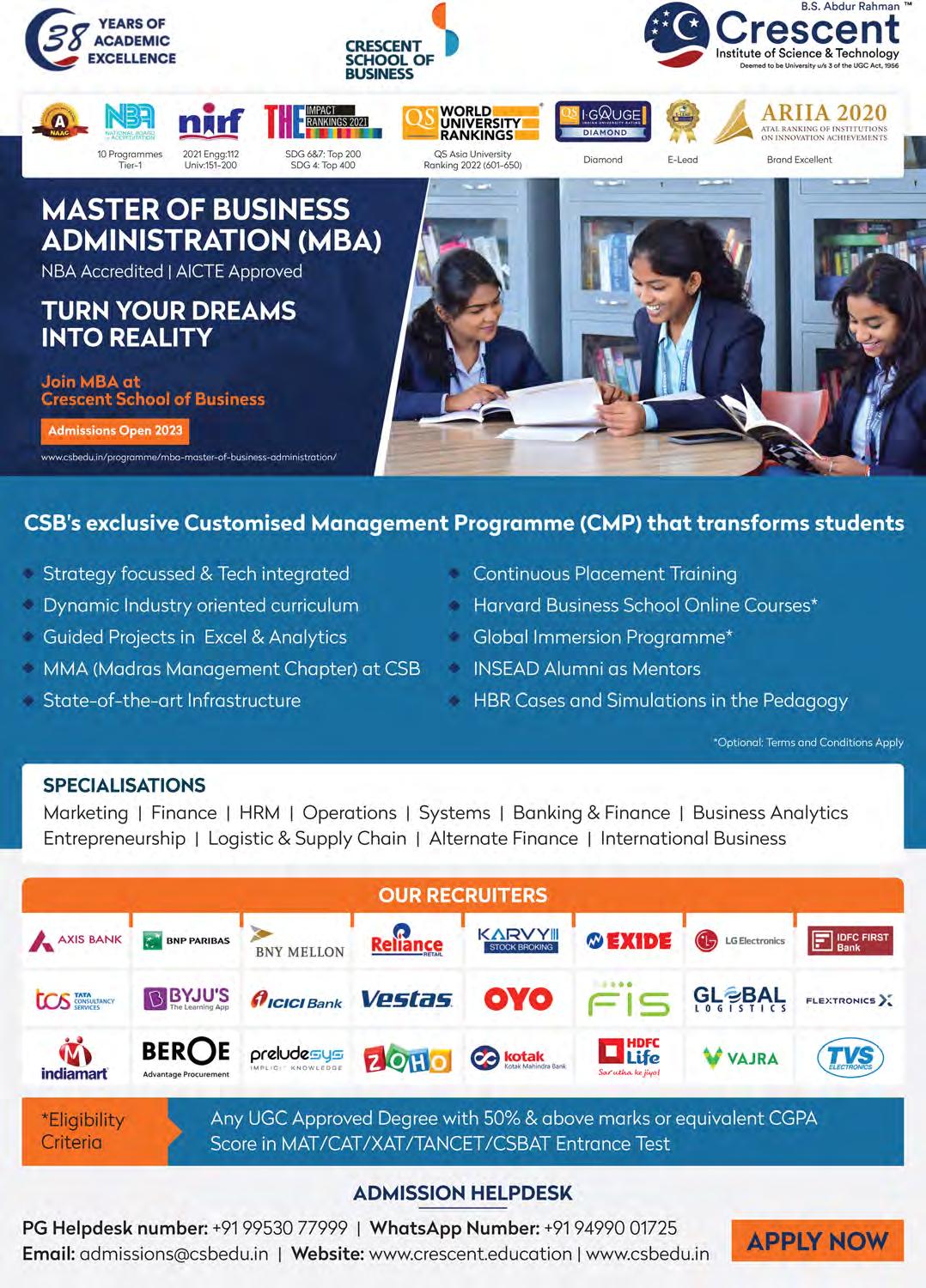
You can see number of areas we are pole vaulting today. Look at the mobile data consumption. In 2007, we were 156 among 231 nations and then came Jio with four rupees per GB. The miracle happened.
The first thing is ease of doing science, technology and innovation in India. That is a challenge. There is a bureaucracy, where procedure becomes more important than the performance. I'm afraid we are still not out of it. We need to work on that to make it easy. Science and technology needs investment. We have the highest intellectual capital per dollar. That does not mean that we can give less money and take out more. The most important part is that for 50 years, our investments have remained 0.7% of GDP. I have been a member of science advisory committee to the prime minister for almost 30 years. Our past PMs Rajiv Gandhi, Atal Bihari Vajpayee and Dr Manmohan Singh, with all sincerity, promised to increase this. Our current honourable PM also said in 2015 about increasing this but it has not happened so far. This is a serious issue and I request our political leadership to look at it. The most important part of that is that when you look at the other figures like 2% or 3% or 4% investment in science and technology in other countries, 70% of it comes from industry. Our ratios are exactly the reverse. Therefore, our industry has to invest more. That is a very critical part.
The other part is about taking risks. If we want to lead, we have to take risks and do things which others have not done. We created NMITLI—The New Millennium Indian Technology Leadership Initiative. Indian industry had worked in areas where markets and technologies were certain. But we said, ‘No. Let's work in areas where technologies are uncertain and markets are uncertain.’ Fuel cells were not even being talked about 20 years ago—no markets, no technology. We went into it. Today I'm very proud to announce that KPIT Engineering has indigenous fuel cell developed jointly with CSIR's National Chemical Laboratory in Pune, which is ahead of the state-of-the-art. It takes 400$ per kilowatt as against the state-of-the-art, which is 1000 to 1200$ per kilowatt. 95% of the components are from India. That is because we took risks and moved forward. The other thing is, of course, trust which is extremely important in the end. That is where I think we have to go a long way. Public procurement policies have to be aggressive in order to move forward.
I have been the chairman of Reliance Innovation Council and they have grown exponentially. One day, Mr. Mukesh Ambani told me, “Doc. We must leapfrog.” I asked him, “Do you know why the frog leaps? Because it’s afraid of the predator and so, jumps a few feet. Do we want to do that because we are afraid of the competitors? Or should we not pole-vault?” The size of the pole is the size of our aspiration.
You can see number of areas we are pole vaulting today. Look at the mobile data consumption. In 2007, we were 156 among 231 nations and then came Jio with four rupees per GB. The miracle happened. We moved from 156. We did not leapfrog. We wanted to be number one. We continue to be number one in other areas too, such as the digital payments. Of course, we have to do
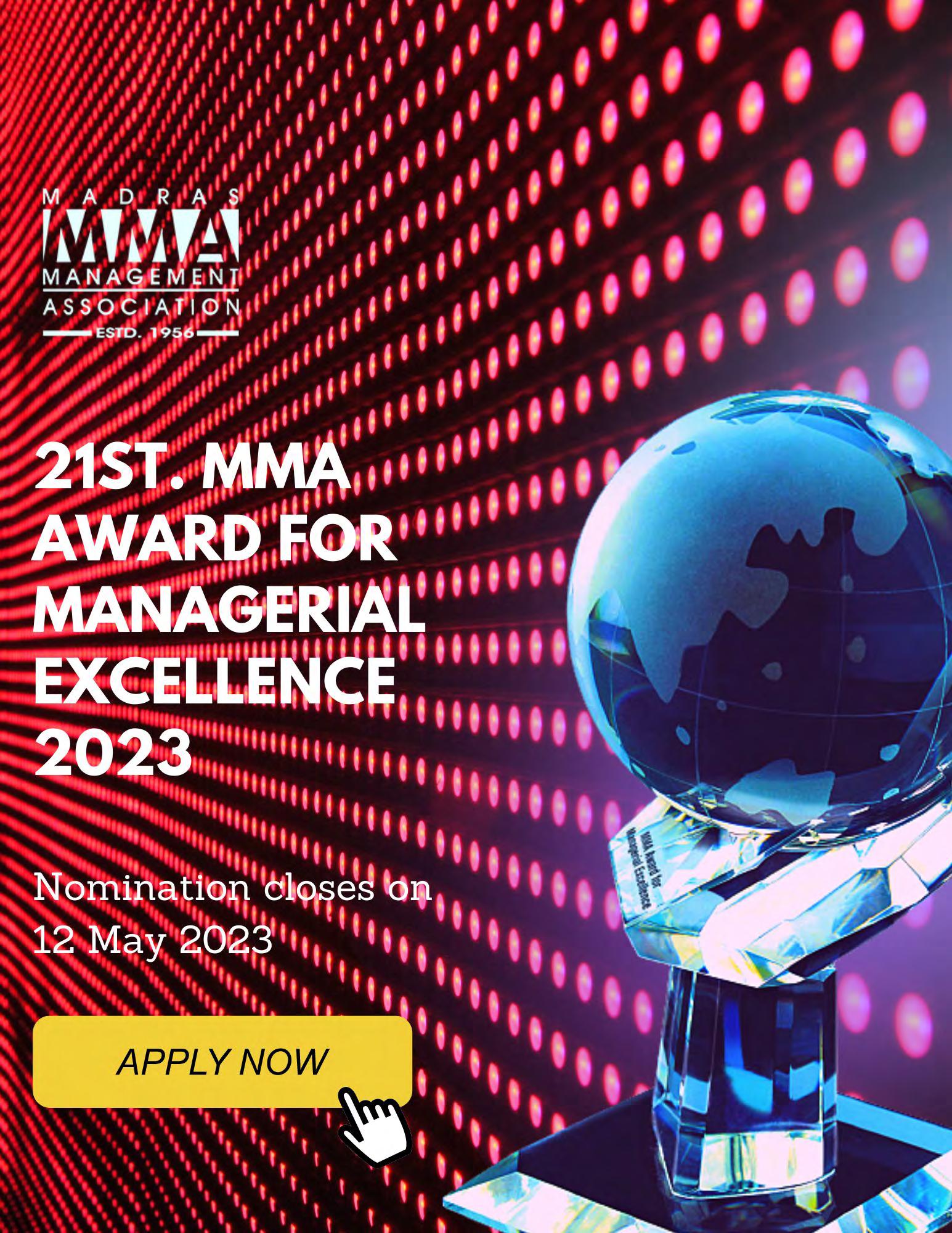
it in many other spectrums. That is where technology and policy will have to go together.
For example, light emitting diodes (LEDs) have very low carbon footprint. From 0.2% to 88%, we jumped in seven years and it's a world record. Because we did demand aggregation. The price was reduced from $7 to $1. There have been so many other innovations too. It is possible to make a radical transformation with speed, scale and sustainability, with the spirit of not leapfrogging but pole vaulting.
Our pathway should be defined by our genius
We found our own vaccine and got our results. We have shown to the world that we can even export. So, India's pathway to success should be our own pathway. Our pathway should be defined by our genius and our genius has to be derived from our own historical experiences, culture and ancient wisdom and which we have got so much in plenty. Some distortions happened in the history that we created. We could not create an inclusive society but now we are progressing towards an inclusive society. We have become conscious that every man has to be taken with us in the progress.
We should become not a voting democracy or electoral democracy but a participating democracy. We don't seem to be participating in our democracy. There must be our contribution and value addition, in some small way, whatever be that small way. There can be only one prime minister but there can be millions of voters and participants in a democracy.
Mr S Kannan, Former Principal Chief Commissioner – GST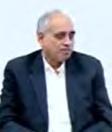
When we find our own genius, we succeed. This is most important for India. UPI and so many other things are our own answers to our own unique problems. One more area where India has done remarkably is GST. I come from that world. This is Indian GST, which has now fairly succeeded in five years’ time and come to some stable state. There were so many pessimistic people and doomsayers. There were so many questions raised: Should we adopt Canadian model or some other model? So many delegations went all over the world in 20 years, but suddenly, we found our genius. We said that we will have our own GST with multiple rates of duty. You may call it distortion but there is no such thing as a pure GST, just as there is no such thing as a pure vaccine.
We have created a situation where celebrations exceed achievements. What is required is grievance redressal mechanisms at the lowest level.
The next thing we need is that there has to be a continuous monitoring mechanism, in which citizens should participate through an audit mechanism. If somebody says that a target has been achieved, somebody should validate it. That validation should come from the citizens. If, for example, the Prime Minister says that 11 crore toilets have been built, fine but there must be a level for validation of it from the
citizens. If somebody declares that 10 lakh trees have been planted, there must be a social audit and public awareness about that project. When everybody becomes a participant in the process, they become aware of the goals.
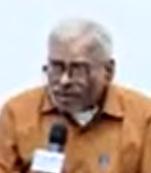
We have created a situation where celebrations exceed achievements. What is required is grievance redressal mechanisms at the lowest level. I come from a department where the grievances are so high. At the same time, we tend to speak as if we have solved all the grievances and everything is hunky dory. There are seminars and discussions everywhere on a celebratory note. If an individual has got a grievance, that grievance is lost. He or she is not able to get the grievance redressed in the easiest way and at the lowest level. There are trivial issues which go to the Supreme Court. This indicates one thing—that nobody in the chain is willing to take decision and responsibility for a particular outcome. Let us hear both sides. We must create this decade as a decade of parity.
LFor India to succeed, we need faith in ourselves, integrity, a sense of duty and resilience. Indians are very creative and creativity is in our genes. We will go places. We will occupy the place that we should be occupying. All of us want India to be a peaceful, prosperous and progressive country. We cannot be all these, without being a powerful country. We must develop very advanced, physically non-violent weapons. This may be sound crazy but it is definitely possible. Historically, we have not latently exploited another civilisation or society.
Don’t measure some aspects of life. Don’t measure success or the love of your mother. You must experience success. Success must be value-laden and value-dependent. Somebody may be successful because he is the richest person or the greatest batsman or the greatest musician in the world. For me, success means that I must be at peace with myself and the rest of the world.
Success must be valueladen and valuedependent
Dr
S Ganesh, Vice Chancellor, ICFAI University
We should become not a voting democracy or electoral democracy but a participating democracy. We don't seem to be participating in our democ‐racy...
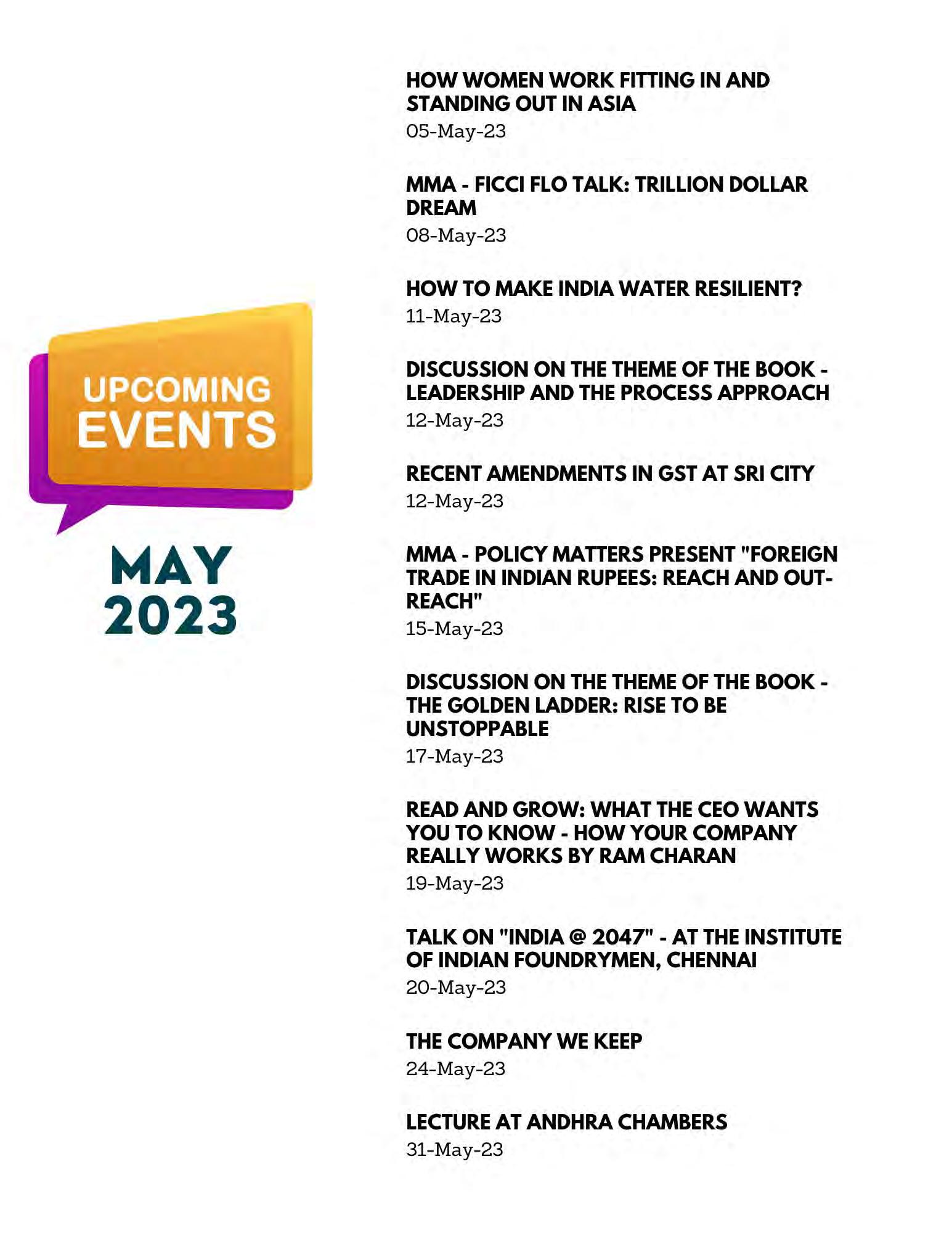

The big news in our country is India's G20 Presidency. It is taking role in shaping international tax reforms. India is at the center stage with a strong stance with the international community, insofar as its support for the two-pillar discussion is concerned. India is one of the foremost countries which embarked in taxing the digital economy. For the first time, the world heard about a virtual permanent establishment and that happened to be India. We are now displaying our ability to adapt to the advancing economy. At the same time, India has expressed its willingness to move ahead with cooperation and dialogue. India's G20 Presidency theme is well expressed with the Sanskrit term Vasudhaiva Kutumbakam, which means one earth, one family, one future and that's really the goal.
On the 24th and 25th of February, the finance
Leading tax litigators as well as senior Government officials discuss Budget 2023, emerging trends in tax disputes, and approaches to dispute resolution.
ministers and the heads of central bank governors of the G20 met in Bengaluru and committed to enhancing international tax policy and steering the global economy towards a strong, sustainable, balanced and inclusive growth. The summary of the G20 summit, which concluded just less than a year back include:
• commitment to swift implementation of two pillar solution
• urging the OECD to finalize the pillar one, such that the multilateral convention can be signed in the first half of 2023
• welcoming the release of global implementation framework, which facilitates the implementation of its rules and common approach
• welcoming the steps taken by countries to implement the global rules and call upon the inclusive framework for finalization of negotiation on what is popularly called STTR
• recognizing the need for coordinated efforts towards capacity building to implement two pillar international packages. This is very
relevant for countries in the African subcontinent.
• calling upon the OECD to conclude the work on the implementation packages with regard to cryptocurrency and crypto assets regulatory framework.
Despite consistency in commitments, we also heard the French finance minister raising concerns on the implementation of pillar one, specifically picking on the United States, Saudi Arabia and India and blaming them for blocking the discussions. We will see in the next few days, what he actually meant.
The concerns raised by digital companies on pillar one, are important. They have voiced that the levies are discriminatory in nature. This also relates back to the action that was taken by the United States Trade Commissioner, with regard to what is popularly called A301 proceedings, lacking an effective mechanism for avoidance of double taxation, and providing a timely
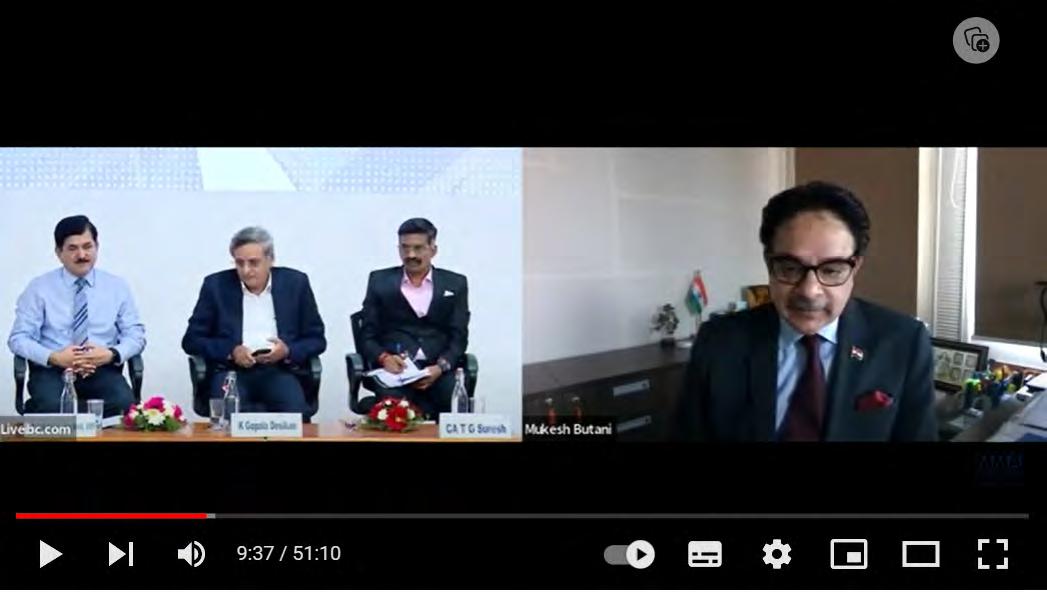
and efficient process to determine whether a particular transaction is liable or not for such unilateral levies. So that sums up the concerns on pillar one so far.
On pillar two, which is the global minimum tax, we have seen a rush of activities by various jurisdictions. To name a few, Hong Kong as late as last week presented its 23-24 budget to the Legislative Council, implementing the minimum tax of 15% on the pillar 2. Singapore, just a fortnight ago, presented the budget and confirmed not just its intent to implement the minimum top up tax, but also looked at large multinationals with annual revenues of 750 million which is also the threshold for pillar two—who are operating in Singapore, and look at effectively commencing its measures from January 1, 2025. United Kingdom, on the other hand, introduced the income inclusion rule, which will apply to large UK headquartered multinational groups, which will force them to pay the top up tax, where their foreign operations have an effective tax rate of less than 15%.
IMF, which is seen as a dormant player focusing only on policy, last month released a report on what they call as the international corporate tax reform. Some of the findings of the IMF are very revealing. It does acknowledge that the international tax system ought to be more robust to deal with tax spillovers, and it should be better equipped for digitalization and also modestly raise the corporate tax revenues.
IMF expects that pillar one would reallocate at least 2% of the total profits of multinational enterprises, mainly from low tax investment hubs, to other countries and raise the global corporate tax rate revenues by $12 billion. It also expects that the pillar two will raise the global corporate tax revenues by 5.7%. As it stands today, it further says that multinational investments may decline modestly in the face of enhancement in the effective tax rates. However, it expects that the effective tax rates would rise from the direct effect of the global rules. From a medium to long term perspective, the tax revenues will be reduced from a competitiveness standpoint, and there will be reduced scope for profit shifting. More importantly, IMF also said that the cross-border tax avoidance will reduce substantially with the implementation of these measures.
The United Nations is not very far away. It is also looking at these changes in the landscape from emerging markets and developing markets standpoint. On 23rd of November 2020, it approved a resolution to adopt the new International Cooperation Framework. The resolution was advanced by representatives from Nigeria on behalf of UN members of the group of African states. The rationale of the move to develop a
international tax.
new cooperative framework within the United Nations is merely to be able to strengthen the International Tax cooperation and make it more inclusive and more effective. It explains the relevance of United Nations in this changing landscape.
We should also table the concerns expressed by others. The European Union has stated that the OECD G20 Inclusive Framework, which puts together 141 jurisdictions and is committed to multilateral solution, is creating a new parallel track of discussion and is really not the right answer. The United States, on the other hand, disagrees with the resolution’s implication, and there is not presently a highly inclusive forum working to strengthen international cooperation on tax. They stated that the wording of the draft resolution will tear down the process under the OECD G20 Framework.
There is a lot of support from developing nations. A case in point is the views expressed by the representative of Nigeria: they said that most countries find it difficult to accept the legitimacy of international norms; and that they have no effective voice in shaping the global framework. Similarly, on the Indian side, we are experiencing a lot of changes, particularly on evolving jurisprudence surrounding international tax.
We saw the Indian Supreme Court in early 2021, highlighting a very important international tax principle, which is also articulated in what we popularly called
Similarly, on the Indian side, we are experiencing a lot of changes, particularly on evolving jurisprudence surrounding
Article 31 of the Vienna Convention on Law of treaties, which is that the treaties should be interpreted in good faith. This landmark decision, besides looking at the issues that were confronting the software industry, did make some very important observations, which tend to make the world look towards India with phenomenal respect for its judicial system. It affirmed the primacy of treaty law over domestic law. It emphasized on the principle of liberal interpretation of treaties. It also looked at government's attempt to override treaty obligation by way of unilateral retrospective amendment overruled. It also looked at the importance of OECD commentary, despite reservations made by policymakers. These important principles and aspects of judiciary make us truly a proud nation. The budget proposals of 2023 are an important direction by the Indian finance minister to maintain the continuity and stability of Indian taxation to simplify and rationalize the provisions, and more importantly, reduce the compliance burden with a view to promoting an entrepreneurial spirit and provide relief to small, marginalized taxpayers.
India is now the third largest ecosystem for startups and rightly so. The government extended the tax benefits for eligible firms to March 31, 2024. It also looked at carrying forward a set of provisions, again in the context of relaxation to startups, and the deduction of 100% of profits with respect to 10 consecutive years from the date of incorporation. It has now been extended from startups, which were incorporated after April 2016 to April 2023. That date has been extended by one more year.
On Dispute Resolution, we all await the reduction in dependency of appeals and hopefully with 100 joint commissioners now at the disposal of the dispute resolution mechanism, we hope that many of the
India is now the third largest ecosystem for startups and rightly so. The government extended the tax benefits for eligible firms to March 31, 2024.
disputes will be cleared out. Finally, I'd like to talk about the role of IFA in shaping the International Tax framework. It clearly plays a very pivotal role. It is a not-for-profit organization. It doesn't lobby or do any advocacy by the governments. Instead, governments invite IFA to share their research and their independent view. And hence, the objective is clearly studying the advancement of international and comparative law in regard to public finance, and in particular, to international tax and competitive fiscal system.
India has become more effective to the outside world
I started my career as a tax man. I was more seen in the corridors of the department the early 90s attending hearings, following up for various issues and referring to tax magazines. Then I moved to the factory side in TVS Motor almost 10 years back, in Chennai. So, tax is my favourite topic.
Where are we now as a country? What is being looked at going forward? What is the outlook? What is the relevance of the outlook to international taxation?
Let me try to put this in three buckets:
•Where are we on FDI today?
•How our GDP has grown over a period of time?
Since 1947, we have received $950 billion; $500 billion we received in the last 90 months. FDA reflects the trust, the consistency in our policy, the consistency in our approach, the economic, social and political front stability. It's a very important parameter to judge where as a country we are going. This $500 billion was received from 162 countries and across 61 sectors. Again, it is not received in seven cities of this country. We have received in 31 states and union territories of our country. It reflects the breadth and depth of the confidence the outside world has on India.
Another aspect of FDI is that post-pandemic, India has become more effective to the outside world. We are regarded as the factory of the world. India is going to be the manufacturing hub going forward. Many things are getting diverted from Europe and China to India. We have the capability, the manufacturing skills and huge skilled labor in this country. Therefore, the future is going to be for us. Again, India is regarded by the world as a service provider. Export, which is around 2% of the world’s overall exports, today is expected to go up by 4% by 2030.
We are at $3.5 trillion today. The first trillion took
67 years; the second trillion, eight years; and the third, five. Our target: by 2030, $7 trillion. Out of the average working population, by 2030, according to a UN report, 24% of the incremental people required for employment globally, will be supplied by India. It is a very important statistic. It means more employment opportunities, more income, more investments, more spending and more economic activities. Therefore, the outlook on GDP is very bright.
Digitization in this country is an unprecedented one both by the pace and the depth at which we are proceeding. We can see all this in the government offices, on land registration and the way documents, payments and investments are handled.
These are quite relevant for our exposure on international taxation. More inflows are expected, the market capitalization is expected to go up and more domestic investments are going to happen. This is just the beginning
Earlier, we were exporting to a few countries. Today we are exporting to more than 80 countries. Those days, in handling tax, I would refer to a couple of sections. Today, we handle transfer pricing and a lot of cross border transactions. A lot of consolidation is expected to happen.
One good thing that has happened is the Delhi High Court’s decision on tax residency. They have given a clear and fool-proof indication for determining the residential status. We also look for a Supreme Court decision on dispute resolution on dividend taxation. Nobody is now looking for a tax haven. With global taxation aligning to 15%, India is also moving towards that. As business people, we only look for consistency, stability and certainty on the tax front.
Another aspect of FDI is that post‐pandemic, India has become more effective to the outside world. We are regarded as the factory of the world.
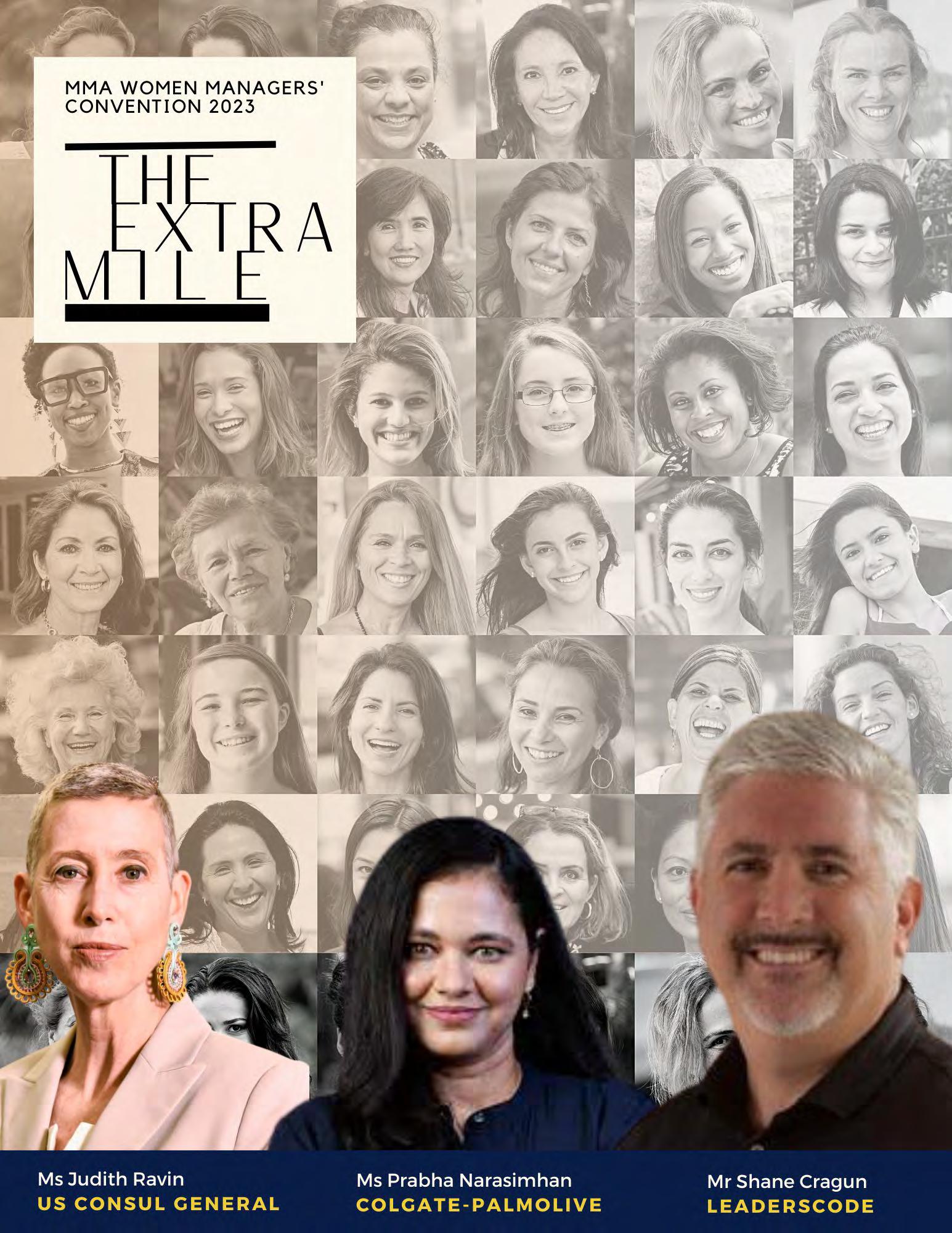
Ms Judith Ravin, US Consul General, Chennai
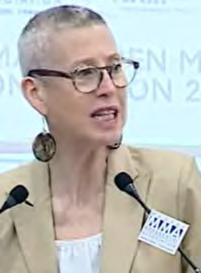
Imight not be here today as consul general if it weren't for the many women who came before me, opening up avenues in society for future generations, demanding that our voices be heard, acknowledging the imperative of inclusive representation, and demonstrating that there is no limit to human potential, when society allows it to flourish.
As you know, March 8 is International Women's
The Annual MMA Women Managers' Convention is a celebration of the spirit of women; and the many diverse roles women play. The event creates a platform for women across different walks of life, to come together, share their thoughts, opinions, insights and experiences.
Day. But for the United States, we reserve the entire month of March to celebrate and honour women's history, and the many significant contributions that women have done and continue to do in society. Each March, the President of the United States designates as Women's History Month, to shine a light on the extraordinary legacy of trailblazing women and girls who have built, shaped and improved upon our society. But as a woman, acknowledging those contributions is a lifelong pursuit, as we find ways to be mutually supportive. The US Department of State's theme for this year is “embrace equity.”
Gender equity and equality is a long-standing cornerstone priority for the United States at home and abroad. We recognize that governments, economies, industries, and communities everywhere are stronger when they encourage and include the full participation of all members of society. Unleashing the talent of
women, girls, and gender diverse and non-conforming persons of every background in all their diversity, starts with working to ensure that they have equal access and opportunities across security, health, education, culture, science and technology, economic and political spheres. Yet this remains a distant reality for many people around the world, particularly those facing, intersecting and compounding forms of discrimination.
The UN's theme for this year’s International Women's Day is ‘DigitALL: Innovation and Technology for Gender Equality.’ Around the world, women and girls face barriers to achieving education, training and resources necessary to succeed in an increasingly digital economy. The United States is committed to empowering women and girls in all their diversity, including preventing and responding to technology facilitated gender-based violence, and addressing the gender digital divide, among other priorities. Increasing the participation of women and girls in STEM catalyses
economic growth and opportunity, and contributes to women's economic security.
The US government has done tremendous work, advancing women's economic empowerment. We are committed to gender equality, social inclusion, and advancing the status of women and girls globally as a foreign policy priority. Global prosperity, security and stability cannot be achieved without the full participation of women in the economic, social, business and political spheres. We are happy to commemorate Women's History Month to elevate women leaders and changemakers like you, who are addressing genderbased violence, stigma and discrimination and reducing barriers in their communities.
Earlier this month, Secretary of State Antony Blinken visited New Delhi for the G20 Foreign Ministerial meet and Raisina dialogue. During that time, he met with women civil society leaders to discuss the important work on women's empowerment and how it enriches and strengthens both India and the United

States. It's great to see organizations recruit, train and inspire future women leaders and celebrate them as they go the extra mile. As the oldest and largest democracies, the United States and India are better together. And in the month of March, we are better together for Her. Do not let others define you; take opportunities as they come your way and never think that life is a rectilinear path. It's okay to make journeys on the way.
that house. We were strong and well-educated women who were taught to speak their mind. I didn't feel that I had an elder brother in the house, four years elder than me.
When we talk about resilience, we usually tend to think about resilience in the capacity of overcoming adversity. But there is another angle to resilience, probably more or equally important angle, which is about adaptability. If all of us think back to just what we were three years ago, we would have not been able to do this. We were all just about in the throes of Covid lockdown at home, unable to see our families, unable to go to work and unable to do pretty much everything. Though it was traumatic and exceedingly difficult, all of us have coped and we have the joy of coming back together. That's adaptability in the face of adversity.
Like Darwin said, it's not always the strongest or the most intelligent of the species that does the best, it's the most adaptable. I would urge you to look at your life and your career and think about the choices that you make and what you can do to adapt to opportunities that present themselves, rather than always thinking about it as something that you do in the face of adversity.
Ms Prabha Narasimhan, MD and CEO of Colgate‐Palmolive (India) Ltd.
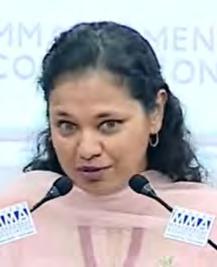
We can't advance the agenda for women, only by women. We do need to advance as a collective and agree with the ‘Better Together.’ I come from a very privileged background. I grew up in a home where women had as much of a voice, perhaps sometimes too much as the men did in
To give you a personal example, I worked for Hindustan Unilever for about 23 years before I joined Colgate nine months ago. In those 23 years, I loved the organization. I had absolutely no reason to leave. I lived in Bangalore. But 10 years into my career journey, they moved the Bangalore office to Mumbai. For personal reasons, I didn't think it was a great idea to move to Mumbai. So, I had to leave. It was feeling like, ‘Oh, my God.’ There is home and there is the second home and you got to make a choice between those two. We always tend to choose our first home than our second home.
As the oldest and largest democracies, the United States and India are better together. And in the month of March, we are better together for Her. Do not let others define you...
However, when I flipped the situation in my head and said, ‘Okay, this is an opportunity for me to see what else I can do out there.’ It opened a whole lot of new doors. Of course, serendipity would have it that I was back in Unilever in six months. But that's another story for another day. The point is, there is an opportunity being adaptable in the face of opportunity.
I must also tell you that I'm a huge cricket fan. No discussion of mine can be complete without a reference to cricket. I woke up this morning to a tweet by cricketer K L Rahul, which said, ‘Things that you love need patience.’ That was in reference to his match winning 75 against Australia after going through a lean patch. True. Things that you love need patience, whether they're relationships, careers or anything else that you value in life. It's never ever going to be a straight path. It's going to have its deviations and ups and downs. It's going to have its moments where you feel that you must step off and give up. It's the ability to persevere in those moments that allows you to reach your destination.
Like some wise person said, ‘a career is not a sprint, it's more of a marathon.’ There'll be moments where
you run ahead of the pack and moments where you really drag, thinking that you are not going to make it to the finish line. Then there is the joy of saying, ‘No, I can do it. I'm going to persevere. I'm going to get there.’ Having now worked for 25 years, I can surely tell you that there are not all highs, there are certainly enough and more lows that need to get managed.
The last point that I want to make is that women must have the ability to bet on their ability. Women tend to underestimate the capacity and the potential they have and this holds them back to achieving way more than they can achieve. Many women have fought for the ability to allow us to take up pretty much any profession. What holds us back is actually personal. Have you ever thought that there is something that people around you tell, ‘You can do it,’ but you think, ‘No. I can't do this’?
I'll give you an example of this from my career. I was with HUL for about 14 years and I'd never done sales in those 14 years. We were in Dubai, and I got a call from the sales director. He said, ‘Come and meet me.’ I am always happy to meet people. So, I met him and he said, “Would you like to come and head the Delhi branch for HUL?” I thought it was a case of mistaken identity. I have never done sales before. Anybody who knows me knows that my Hindi is suspect. Hearing the words, ‘Go and be the first woman branch manager of Delhi branch,’ my instinctive response was, ‘No. I don't think I can do the job.’
Then he gave me a 10-minute lecture on how he thought, I could do the job and said, “Don't worry, go into it.” Convinced by that fantastic lecture, I did take the job. I can't say I was the best branch manager ever, because that would be a lie. But I can tell you that it
...Women must have the ability to bet on their ability. Women tend to underestimate the capacity and the potential they have and this holds them back to achieving way more than they can achieve.
certainly added a lot to my leadership journey and to the confidence that I have in my own ability. Every other time that I've been faced with a question of, ‘Do I think I can do something or I can't do something?’ I look back to that moment and I think that if other people can have the confidence that I can do it, then surely I deserve to give myself the confidence that I can do it.
I want to end on an absolute literally classic from way back in childhood, called, ‘The Little Engine That Could.’ The line goes, ‘I think I can. I think I can. I think I can. I have a plan and I can do almost anything. I think I can.’
What are the new rules of leadership that will allow you to do well in this hyper competitive environment? That's what we researched the last five years. We need to think about it differently. Because the world is so complex and challenging, you have to play really big. You cannot play in the weeds. You have to fly high. You have to go hard and fast; big, bold and courageous. Otherwise, the headwinds will slow you down. Play as a team.
Master Disruption: Do not sit home and wait for disruption to hit. You go right into it. There's a difference between the big wave surfers that will surf a wave 33 meters or higher and everyone else. When they see the swell getting so big, they get excited and go right into the biggest part of the wave. Everyone else runs for safety. If you're going to play big, you must master disruption. You must go right into it. If you need to change, you must pivot quickly. You don't wait. Disrupt before being disrupted. You're not a victim of your environment. You own your environment.
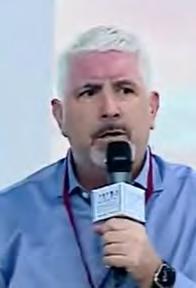
If you have the right leadership, you get to play in a very big way. But the leadership discipline has lagged far behind. There needs to be a new way to think about leadership. We've created a startup called ‘LeadersCode,’ and identified the seven big things you can do as a leader, that make all the difference in the world. Since the pandemic, the playing field is different. It's boundary-less. You can be very powerful in your home office, on your laptop. But we also know that it's hyper competitive and there are strong headwinds.
Many of you feel that it seems to be a 24/7 sprint.
Go for the moonshots: Shoot for the moon and the Mars. It's not about simple goals anymore. That doesn't motivate people. They want to be involved in moonshots and movements. Gandhi never had a badge that said ‘Vice President of a movement.’ Everybody wanted to be a part because their heart and soul was in it. Movements are about hearts and spirits. What can you do to inspire a movement to play big and shoot for the stars with realism?
Tap into your ecosystem: If I'm an industry, I can simply worry about my industry or I can play deep with my customers, my suppliers and my partners and build a very big tribe around me with capabilities. You can play by yourself or you can play with a big tribe. That means that as you work, you're thinking about the people in your sphere of influence. Reach out and grab capabilities from your friends and bring them in.
Solve unsolvable problems: It's no longer about just simple innovation. As Elon Musk does, solve unsolvable problems. What are the things that hold you back and how can you break through those barriers? Elon Musk said this the other day, when he was asked, “How can you do such incredible things?” He said, “Because I don't think and see the world like other people. I was in my car in Los Angeles and the commute was really, really bad. I had to get to the airport. I said, this traffic in Los Angeles is ridiculous. We've got to solve it. What do you think most people would think of? ‘Let's add another lane, maybe an express lane. Hey, let's do a double decker highway.’ I don't think like that. I use first principle thinking. What that means is, I simply ask: I want to go from here to here. What's the best way? And, I'm going to dig a tunnel.”
Now he can go from his house in Los Angeles to the airport in seven minutes, going 200 miles an hour in a tunnel. The idea here is, we all can innovate. But it's now about solving the problems that everyone thought was unsolvable. Those are what we call headwinds or barriers.
Understand your superpower: Your superpower might be operations or marketing. That's your expertise. A superpower is what Gandhi had, which was his ability to show presence and ethos and people flocked to him. He would not have been a very good carpenter or auto mechanic. That's technical expertise. Each of you have a superpower you are born with. That's your voice. Find your voice and play big with that. Don't worry about being perfect in everything. Each of you have a specific contribution to make and build everything around that.
It also applies to organizations. Toyota says, ‘We do one thing really well and everything else is pretty good. And the one thing is, we know how to build quality automobiles. That's our superpower. Everything else
just has to be industry average.’ In your life, it's not about normal skills. It's about something that's unique to you.
Go for collective intelligence: It is no longer about celebrity CEOs or individual brilliance. It's team and collective intelligence.
Become a resilient corporate athlete: If you don't have the stamina to lead yourself, it's going to be hard to lead others. No one derails you. You are the one that owns your career.
Visions and missions no longer have the power to do big things because they just engage your heads and hands. It's inspiration that matters. When you have inspired employees or yourself, you can do amazing things. The new leadership science is that you don't have to build it, nor do you have to own your capabilities. You can plug it like a USB drive into the computer.
The old way of leadership is that you need to build it and own it. The best way to do now is find an ecosystem partner and plug it in. Don't worry if you have it or not. Find a friend and bring him in, to solve unsolvable problems.
Ask yourself this question: ‘What makes me truly unique? How do I build that into what I'm doing?’ You don't have to fake being anybody you're not. Stick with the authentic you. Feed and fuel your superpower. Emphasize team over individual. There is no such thing as an individual CEO with brilliance. The world is too complex for one person to manage. Put a team around you that will help you make the right decisions and overcome setbacks. And lastly, become a resilient corporate athlete. To lead today, it takes incredible physical and emotional stamina and mental agility.
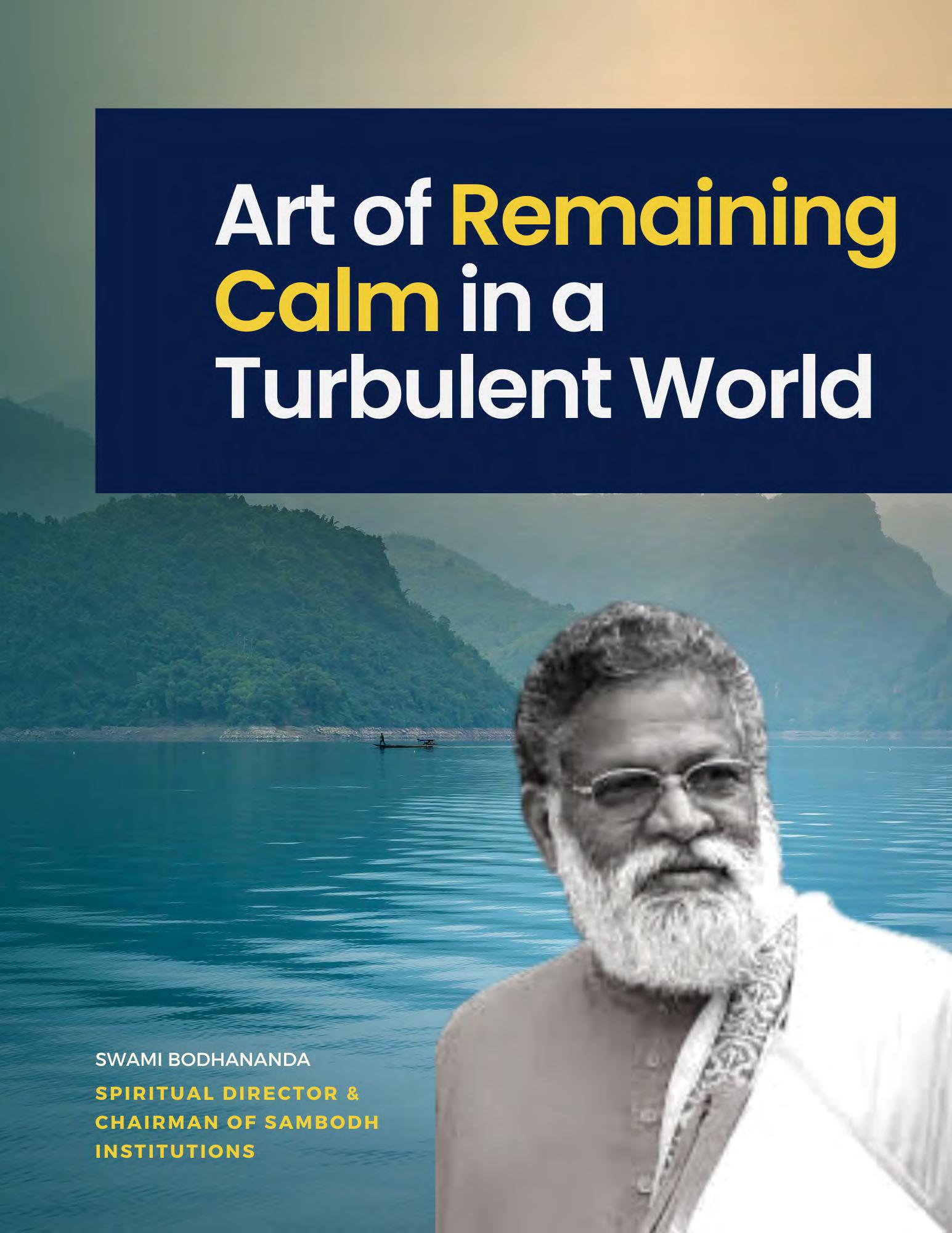
Remaining calm in a turbulent world is a challenge that we all face. If you interact with the world with a disturbed mind, then the world looks confusing and you become unproductive. You may be efficient but not effective. A person with a disturbed mind is like a bull in a china shop or a misguided missile. It can hit the wrong places. You can be very calm in a cave at Himalayas because there is nobody to disturb you, but it's very important that we keep our mind calm while we interact with the world. When the mind is calm we can understand the world better and process the sensations better. How do we do that? Is it a science or an art or something else? Or is it both an art and a science? Science is technology, and art is application of the technology. I find that most people have the domain knowledge and skill sets, but they are not able them apply it properly. What they lack is the sub-skill or emotional intelligence or effective people skills. When you are alone, you can achieve nothing but you can achieve a lot when you are in a team. The challenge is, keep yourself calm while you
Swami Bodhananda is a world‐renowned management guru. He is an avid reader and is well‐versed with the contemporary challenges that the corporate leadership and corporate management face. In this talk, he stresses on watchfulness and how it can impact our mind and its functions.
are interacting with your teams.
They say the center of the storm is calm. Can you remain calm, quiet and serene in this turbulent world as you interact with others and as you process sensations and respond to them? Our mind is like a drunken monkey, stung by a scorpion and possessed by a ghost. To tame such a mind which is like a wild river, you can dam it and have a beautiful reservoir. You can use that water for generating electricity or for irrigation.
First of all, you should know if you have a mind. Most people don't know. They think they have hormones but not a mind. How do you recognize that you have a mind? You must do some reflection. The mind and the self are different. It is the self that owns the mind. Take some time every day of your busy life, sit in a quiet corner and watch yourself. We don't watch ourselves but watch others and comment upon others.
In the process, we forget to watch ourselves. Watchfulness is very important to recognize the place of the mind and its importance in life.
The mind takes care of four functions—emotions, thinking, memories and ego. When you don't look at the mind, it misbehaves. When we mind the children, they behave; when we don't look at them, they try to misbehave. The self has got two aspects: the witnessing self and the executing self. Mind has got two parts—the surface mind and the deep mind. Psychologists call the deep mind as the unconscious mind. We don't know what is going on there. The unconscious part influences our behavior. As far as the world is concerned, there is a sensory world, which is presented to you and a scientific world, of which you don't know much of what is going on. Thus, an individual is a complex entity. The environment influences you, you influence the environment and the self in turn influences you. All these things put together is the individual sitting there
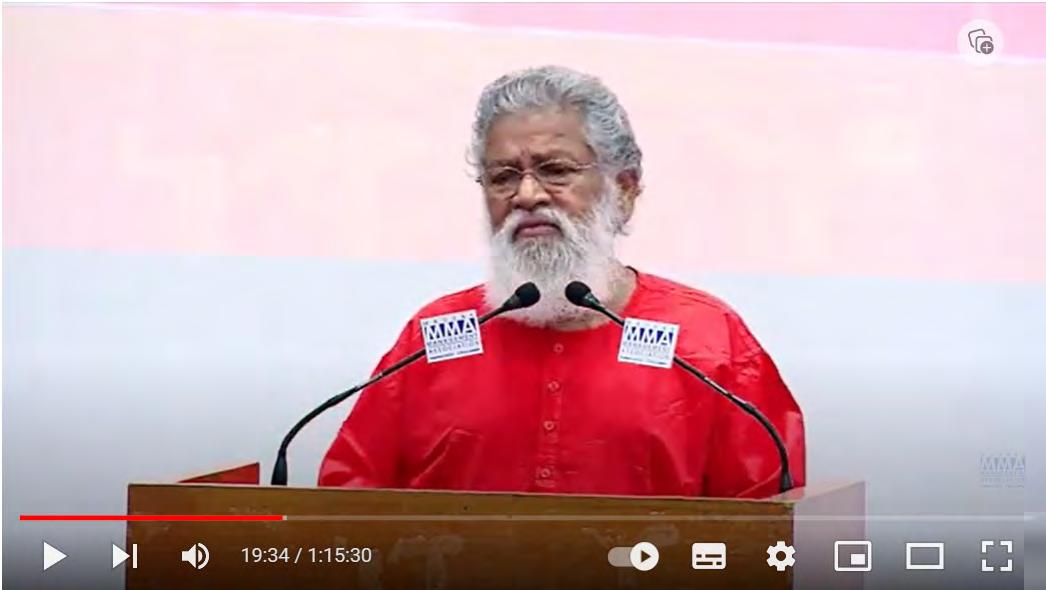
like a question mark not knowing what is going on.
When the mind is calm, you get access to your spiritual reserves or the spiritual energy. You must believe that you have a spiritual reservoir which has great energy and that belief is very important in managing the mind. If you are part of the mind, then you also become part of the problem. You must understand that you are beyond the mind. Somebody said, “Give me a lever and a place to stand. I can lift the whole world.” The mind is a lever, a tool, but you must
The environment influences you, you influence the environment and the self in turn influences you. All these things put together is the indi‐vidual...
have a place to stand to use the mind.
That place to stand and use the mind is the ‘self’ which is referred to by the experience of ‘I’. We always use the word ‘I’. We say, ‘I got up in the morning, I had a bath, I had my breakfast and so on…’ One thing which doesn't leave you is the ‘I’ experience. The ‘I’ is your centrality and the rest are all happening around you. Every day, sit in a quiet place to reflect. These days, we simply react without reflecting. That is the greatest tragedy of the modern individual. Through reflection, you can realize that you are beyond the mind and that your mind is just a tool like a car or a computer, which you can use to reach your destination and get knowledge and information. Watchfulness is also called mindfulness and attentiveness.
A leader is one who gives a vision and motivates people to work toward realization of that vision. Being a leader or a manager, you must have some time to sit calmly and reflect. It is not waste of time but a good investment. Spend some time every day to watch your mind, to experience your mind and to distance yourself from the mind. Then you will get the ability to control the mind. The miracle is that when you watch the mind, it becomes calm. You don't have to do anything else. If you try to discipline the mind, it rebels against you.
When you sit in a puja room, the mind is calm because nobody is disturbing you but once you are out
in the world, the mind becomes agitated, like water into which stones are thrown. Watch the mind without judgment. Most of the time we judge ourselves, ‘I am good; I am bad’ and so on. When others judge you, you internalize their judgment. We look for confirmation from outside and allow our self-image to be determined by others.
There's a very interesting story. When Buddha was preaching about enlightenment or Nirvana, he was giving the message that answers to your questions can be found if you look into yourself. During his wandering, Buddha was feeling thirsty and he asked his companion, Ananda, to fetch him some water from the river. Ananda ran towards the river. When he went there, the water was all muddied because a few bullock carts had crossed over the shallow river and the water had become muddied.
Ananda jumped into the water and tried to clean up the mess. The more he tried to clean up, the more the water became muddier. Finally, out of exasperation, he went to his master and said, “Master, I couldn't get a clean cup of water.” Buddha asked, “What did you do?” Ananda said that he jumped into the water and tried to clean it up. Buddha told him, “You should have stayed on the bank of the river. The mud will settle down by itself and the clean water will surface. Then you could have fetched the water. Go and just watch.”
Similarly, when you watch the mind, it becomes clear. Spend 15 minutes every day with the mind, being friendly with it and watching it. There will be distractions when you try to sit quiet. Those distractions may be coming from the depth of the mind, like undigested food. The mind tries to reprocess all your past experiences, because a lot of traumas might
A leader is one who gives a vision and motivates people to work toward realization of that vision. Being a leader or a manager, you must have some time to sit calmly and reflect.
have been accumulated by you, as you grew. Don’t worry about it and keep practicing every day.
The next task is to maintain that state of mind while you are interacting with the world. It is possible if you practise non-reaction. Create some gap between stimulus and response. Our tendency is to immediately respond to a stimulus, without any gap. Take a breath, say ‘Aum’ and create some gap. Don’t suppress your feelings. Then it may lead to diseases. Don't express violence, but respond to situations.
We all search for happiness outside. Our happiness is within. What do you want at the end of the day? Power, money, reputation or fame? Finally, we end up saying, “I want to be happy. I want to be comfortable.” Our ultimate goal is not wealth, but well-being. A happy individual is creative, while an unhappy individual turns destructive.
At the peak of their careers, some are so busy that even their children might think that they are strangers in the house, because the children would have rarely seen their father. Later, they regret what they have done. So, happiness is very important. When you are happy, you are nearer to God and when you're unhappy, you're far away from God. God is the ultimate value of all good values. God is a smile away, they say, and not a mile away.
When you smile, you attract everybody and become a magnetic, charismatic person. When you frown, people move away from you. When you reflect and contemplate, you can realize that happiness is not outside but happiness is your nature. This is the sum and substance of Indian philosophy, culture and tradition.
So, these are the three things that you have to practice:
• Sit down and watch your mind without judgment.
• Don't suppress your emotions but do not impulsively express yourself. Look before you leap. I heard a story that somebody was sitting on the seventh floor of a star hotel, looking through the window. He heard an internal announcement that said, “Mr. Peter. Your wife died of an accident and hearing that your daughter also committed suicide.” Hearing this announcement, the man thought that there was no point in living and jumped out the window. As he was falling through the floors, he realised that his name was not Peter but John. It was too late by then. Therefore, create some space between stimulus and response.
• Your happiness is not outside. Nobody can make you unhappy, and nobody can make you happy either. You have the agency to be a happy person. Take back the agency which you have lost. Become an agent of your own happiness.
By these methods, one will be able to calm the mind. That's why I call it, ‘The Art of Calming the Mind’— and not the science and technology of it. It is very important that you are able to have a handle on your mind so that you can interact with the world better, understand the world the better and understand yourself better. You will become a whole and healthy personality. When you interact with the world, you will become magnetic and charismatic. You can influence people and your own thoughts and you can become the master of your destiny, with a calm and quiet mind.
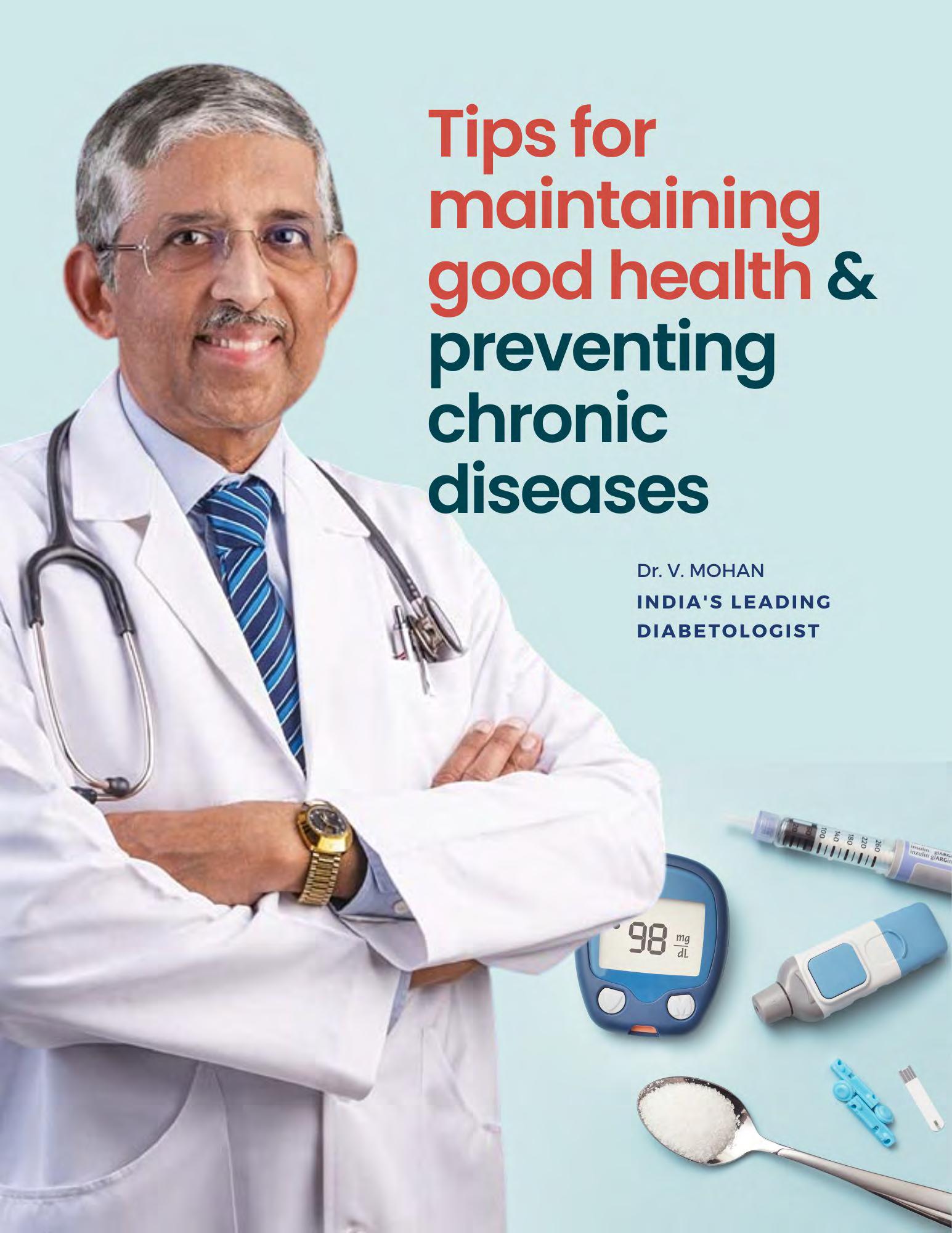
Let me begin with a shocking fact. One in four adults aged over 20 years in Chennai, Delhi and other metropolitan cities have diabetes. If we take the age of 50-55 and above, 40% have diabetes and 35% have prediabetes. Chronic diseases like diabetes, hypertension, heart disease and cancer have a common link from which they all come. What I'm going to discuss applies to all of them..
What is diabetes? In all my clinics, it is written that, ‘Diabetes is not a disease, it’s a disorder.’ The body produces more sugar because the insulin production is not good and that leads to high blood sugar. For a normal person, fasting blood sugar should be below 100. If the level is between 100 and 125, it is prediabetic stage. Above 126, it is diabetes. But this is also age related. If somebody at 70 has 102, you cannot call them pre-diabetic but if somebody at 30 develops that, definitely it's abnormal. But 200 and above,
Dr V Mohan, India's leading diabetologist, sheds light on the various factors at play with the rising tide of diabetes in India.
irrespective of any age, in a random sugar test, is diabetes only. Random sugar test must be done on more than two occasions. If that's fasting, testing once is enough. The gold standard is GTT (Glucose Tolerance Test). The person comes after fasting and receives 75 grams glucose. Two hours after that, they draw the sample and if it's above 200, it's diabetes. Then we have the test called HbA1C or glycated hemoglobin, which the American Diabetes Association has accepted. In India, we don't fully accept it as a diagnostic test. If the result is 6.5% and above, then it is diagnosed as diabetes. Before you go to the stage of diabetes, there is a stage called pre-diabetes. The last stage is the stage of complications wherein the eye, kidney, heart, feet, nerves and sex organs are affected.
Yes. But in the stage of complications, there's no reversal and keeping alive itself is a big thing. But all this is eminently preventable and reversible. You don't
have to go from one stage to another. Once the kidney gets seriously affected and if you enter end stage renal disease, you have to do transplantation of the kidney or do dialysis. If you don't do any of these two, you will die. Both are very expensive. There are not many kidneys around. They do 5000 to 8000 kidney transplants in India while they need about a million in a year. That is why prevention becomes important.
I would recommend everybody above the age of 30, at least in India, must go for a routine checkup, which includes checkup of diabetes, hypertension, cholesterol and liver function tests, on an annual basis. The advantage is that if you pick up the symptoms at an early stage, you can reverse. If you don't do that and suddenly you find your sugar is 350 and Hb1AC is 10.4, you have lost a golden opportunity. Especially if you have diabetes in the family, spread the word around that even youngsters must start testing. If you see something mildly abnormal, it's a great motivation for you to do something about it, rather than just ignore it like an ostrich that puts its head under the ground and
thinks that nobody can see it. We can still see the ostrich. Similarly, the disease will be there, even if you ignore it or deny it.
Symptoms of diabetes unfortunately don't occur in more than 50% of people. Even people who come with very high sugar, may not have any symptoms at all. That's the reason why it's called a silent killer or the silent disease. Things like frequent urination, thirst, hunger, aches and pains in the limbs, weight loss, itching in the private parts, tiredness, delayed healing all these are late symptoms. You have to progress quite a bit before you get clinical diabetes. If you don't control it early, the beta cell function will go down. You will lose more and more of the pancreatic insulin reserve that you have.
Diabetes has been increasing in India. Don't believe people if they tell you on WhatsApp that it is all a myth and that pharma industry is making it up. We have done many studies with different sampling. From about 2%
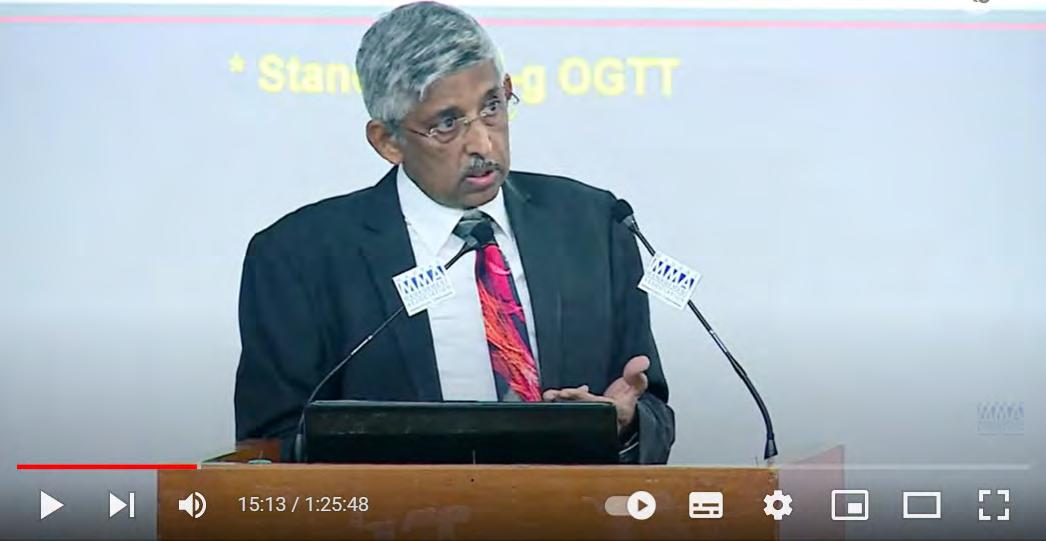
diabetes prevalence in urban Chennai in the 1970s, it was 25% in 2015. Now, we may be close to 30%. From 2% to 30%, it is a huge increase. In rural India, it is always less than urban, because they are more active, eat healthier food, probably sleep better and do a little more manual labour. They're not exposed to pollution. But guess what, in the ICMR INDIAB study which we did, in rural Kerala, the prevalence of diabetes is actually higher than in urban Kerala. There's no urban and rural divide in Kerala. Things are changing, and in Tamil Nadu also, it's catching up very fast. India is heterogeneous and the prevalence varies from state to state, just like in Europe.
Is this epidemic due to genetic factors or environmental factors? Obviously, genes are important, especially if you have a family in which your father and mother have diabetes. Then your risk is higher. But what actually drove it is the lifestyle. People earlier lived a simple life, carrying weights on their head. Now they carry nothing but the cell phone. When we were children, we used to play in the fields. After we came home from school at four o'clock, we would go to the ground and play. Today, how many people do that? We drank water in the school tap. Now we are scared to drink the tap water. We ate simple foods. Today, it's all sophisticated junk food. Thanks to the IT revolution, our youngsters work to US timings. They are paid in US dollars but the price they pay is that their work starts at eight or nine in the night. They work till the whole morning. What food will they get at 2am? By no way, it can be idli or dosa. So automatically, junk foods come in, which means that carbs go up and your sugar goes up. Your carbohydrate goes up, and your physical activity goes down. In general, exercise has gone down for everyone because of mechanization. We have
motorised transport. Urbanization brings in so many other things like pollution.
Just two days ago, we published a paper in Nature, where we compared living in 190 countries. 400 to 500 authors collaborated for this paper on the theme, ‘Living In An Urban Area: Is It Good Or Bad?’ It turns out that in the least developed countries, living in an urban area is still good, because rural has nothing there. But in many countries, living in rural areas is better than living in urban areas because it brings down pollution. Imagine living in Delhi with the high amount of pollution!
Every single point I make is based on published evidence. They are published in very good international peer-reviewed journals. But if you search in social media, you will hear the complete opposite things. Somewhere along the line, the truth also has to be told.
I did a research on the connection between rice and diabetes, inspired by a lead given by Sri Sathya Sai Baba and I found he was exactly right. We divided Chennai into quartiles of glycemic load. The amount of glycemic load is driven mostly by white rice that we take. It's not sugar that we take. One spoon of sugar in a cup of coffee is nothing compared to the amount of carbs that you eat in your rice. In Chennai, it's mostly white rice. If you take the lowest quartile, believe it or not, in Chennai, the people who eat the least carbohydrate take about 200 grams. This is more than double the highest in many countries. Then we move to the second quartile, third quartile and fourth quartile. When we double the rice intake, from 200 grams to 400 grams, diabetes just doesn't increase a little bit but it goes up fourfold, which means if the prevalence is 6% in the first
quartile, it's 24% in the fourth. We have the data corrected for physical activity, BMI, family history, income and socio- economic state. Everything is adjusted for. Why does this happen?
When you take carbohydrate, it gets converted to glucose. That glucose pulls out the insulin from your body. If you're already prediabetic or diabetic, having less insulin reserve and by taking more and more carbohydrates, all the insulin will come out. This is from a cross-sectional study where we have only a hypothesis that maybe rice is linked to diabetes. In a cross-sectional study, there are so many confounders.
If you want to go further, you have to do longitudinal studies. Start off with a population where they didn't have diabetes. Then, follow them for 5, 10, 15 or 20 years, see who developed diabetes and then look at their original diet. That is a very powerful tool and because you've followed them and you know what all happened to them, the confounders comes down. We found that if we take fibre, diabetes goes down. It's very clear that it's only the carbohydrate where there is no fibre—the refined white rice—which increases diabetes. Brown rice or millets which are not refined are not as bad as the polished white rice.
We did another study on incident diabetes which
took us 15-20 years. It's based on 1,32,000 people in 21 countries in five continents, whom we had followed. We started with India and then added 27 countries. Professor Salim Yusuf from Toronto, my PhD student Bhavadharini and I were the prime movers of this. We took people who didn't have diabetes, then saw the rice consumption across the world and tried to correlate to the new onset of diabetes. If you look at the hazard ratio of developing diabetes, a ratio of 1 means normal and there is no correlation between rice intake and onset of incident diabetes. If the ratio is 0.6, it means rice protects you from diabetes. If it’s 1.61, like in South Asia, that means you have 61% higher chance of getting diabetes, if you take rice. In China, it is only 1.04 because they have cut down rice intake so much that today it's not their leading cause of diabetes.
The same population, we divided into physically active and physically inactive. If you're physically inactive, your hazard ratio is 1.5. That means, you have 50% higher risk of getting diabetes. If you're physically active–with just some daily walking that you do—it comes down by almost 34%. The risk is still there but the significance is gone. Just by adding physical activity, you get tremendous benefit out of that. What if you substitute white rice with brown rice, totally unpolished, with more fibre, more protein, more phytonutrients and B complex? The husk is there. The bran is already added. We did a project along the Harvard School of Public Health. What we found was very interesting. In normal people, without diabetes, we put a patch to continuously monitor their glucose. Day by day, we fed them. First, we fed white rice, then we fed brown rice and then brown rice with pulses—Bengal gram, green gram and so on. We found the sugar level is lower if you take brown rice. When we add little pulses to that, there
If you look at the hazard ratio of developing diabetes, a ratio of 1 means normal and there is no correlation between rice intake and onset of incident diabetes.
is further reduction. The moral of the story is, try to take rice, which is not so polished. Even semi-polished is okay. Add pulses to it, increase your fibre and you will reduce your glycemic load. This is more prominent among those who are already obese and having a poor metabolism. If you're already thin and you don't have any complications, it doesn't matter whichever rice you eat.
Diet, exercise, medicine and education are the four pillars of diabetes management. Medicine is shifted to the third pillar. Diet is the first form of treatment. This is for Type II diabetes. 90% of people with diabetes have Type II diabetes. There are good carbs and bad carbs. Fruit is good. Although it contains liberal fructose, it's still good; but fruit juice is not good: it is high in sugar and calories and there's no fibre. Highly polished white rice, white bread, cookies, pastry, cake, ice cream, chocolate, potato chips, French fries are to be restricted or avoided. What about good carbs? A lot of veggies contain a little bit of carbs. You can take as much as you want. Whole fruit, particularly those which have lower GI (glycemic index), legumes, kidney beans, peas, lentils, Bengal gram, green gram, black gram, mushroom are all very good in protein and fibre. The good fats are there in nuts, walnuts, almonds, cashews and hazelnuts. Seeds—sunflower seeds, chia seeds and pumpkin seeds are very good phytonutrients. You can take many other antioxidants. You can take whole grain, brown rice and steel cut oats.
Take a circular plate. Half of it should be filled with veggies. Vegetables are very low in calories, very high in fibre and give you all the minerals you need and B12. They have anti-cancer property. That's the essence and
secret of nutrition. A quarter of the plate should be reserved for protein. You have to find the right protein to take and it's not easy. If you take Bengal gram or green gram, you get gas trouble and diarrhoea. Milk is good. Curd is a good probiotic. It's not so easy to get vegetarian protein; but if you are a vegetarian, you should think of protein intake and you should take it every time. Now, only a quarter of the plate is left and there you take your rice. If you want white rice, take it but limit the quantity. If you can change to some other rice, it’s good. Whole grain wheat is much better than refined wheat flour or maida that we take. This 50% veggie, 25% protein and 25% rice (50-25-25) principle is called the plate principle. This is the answer for all chronic diseases including obesity, diabetes, heart disease and so on.
According to a paper we published in the Journal of Nutrition, raw cashew nut consumption actually reduced systolic blood pressure and increased the good HDL cholesterol. Indians have the lowest good cholesterol in the whole world and that's why we get heart disease at a very young age. The good cholesterol (that is supposed to take away the bad cholesterol) is very low for us. We don't have many ways of increasing it. Of course, you can do a lot of exercise and it'll increase a little bit. Almonds are also similar. We are working on all the nuts. We have finished cashew and now we're working on almonds, pistachios and peanuts.
Diet, exercise, medicine and education are the four pillars of diabetes management.
We found 43 grams of raw almond or one fistful is good. It shouldn't be salted because, salted almonds and cashew shoot your blood pressure up. Almond improves insulin sensitivity, increases HDL cholesterol and provides a lot of metabolic benefits. These are all from randomized and blinded clinical trials. We don't know who is taking and who's not taking until the results are finally published.
They reduce the cardiovascular risk factors and we have proved it. Take fresh salads. They are cheap and good. Apple, orange, guava, watermelon and papaya are fruits which are low in GI. A word about fibre. There is insoluble and soluble fibre. If we take foods which contain fibre, we feel full. Protein does the same thing. Instead of idli, dosa and all that, if you take two or three egg white omelettes in the morning, even at 2 pm you won't feel hungry. With idli and dosa, by 10.30 or 11 am, you're already hungry because it's carbs and it's gone. The egg white has zero carbs and gives so much protein. Glycemic index or GI is the blood sugar raising capability of a food. GI is calculated in terms of glucose or white rice. 100 is for glucose or for white rice. If it is more than 70, it is high GI; less than 55 is low GI and 55 to 70 is medium GI. Take things which are lower in GI, like fruits. They need less of insulin.
There is so much myth about milk and dairy. We find that milk and dairy are protective for diabetes. Don't take too much of milk. One glass of milk contains 500 grams of calcium and is very good for women. It's like taking a calcium tablet. Men can also take it and there's nothing wrong. You can prevent fractures and osteoporosis. We studied 147,000 people in 21 countries and published our findings in BMJ Open
Access Journal, where we have shown that higher intake of whole fat dairy (you don't even have to take low fat or skimmed milk) is protective of all the cardiometabolic risk factors. Diabetes, obesity, heart disease, metabolic syndrome, everything comes down in those who take dairy products.
What about artificial sweeteners? Again, there is a lot of hype about them. When you take one tablet or one drop, it is 100% safe. It doesn't do anything, including on the gut microbiota. We're doing a big study which will soon be published.
Salt, no doubt, is very bad. It increases hypertension. What is recommended is five grams of salt for the whole day. That is one teaspoon. An average Indian takes 12 grams of salt and that it’s two and a half times more. Don't add salt on the table for anything from today. A little bit of salt for taste is fine. Don't take things which are loaded with salt, like pickles. If at all you need, take it in very small quantity.
Drinking too much or too less of water is bad. Take two to three litres of water. Remember, one cup of average size is about 250 ml. If you take eight of that, you're roughly okay for the whole day. The fluid, of course, includes milk or other fluids like rasam or anything else. Don't drink water when you're having your food. Either drink the water before food or half an hour after your food. Give food time to digest. Otherwise, all your digestive juices will get diluted when you keep drinking the water.
A very simple sign whether you're getting enough water or not is checking your urine. Contrary to what people think, it is not white in colour like water but has a pale-yellow tinge. If it’s pale yellow, then you're drinking enough water. If your urine is dark yellow, it
doesn't necessarily mean you have jaundice but it means you're not drinking enough water.
Can a person drink alcohol? It is the most sensitive subject. Well, the bad news is that all the Indian studies have shown that it is not good for health, even if you take one drink a day. They say red wine is good in France. But in France, they eat a different type of diet than we eat and drink a different type of wine than we drink. They have shown some benefit at a certain limit. Beyond that, it's bad even in France. You will get alcoholic hepatitis, alcoholic pancreatitis, fatty liver, cirrhosis of the liver and so on. Three or four independent Indian studies have shown that any amount of alcohol is bad. Also, the accompaniments which go with alcohol, increase calories.
What about physical activity? Exercise is one of the best things that you can do. I would encourage all, irrespective of your age and whether you have diabetes or not, to start exercising. It is the best insurance that you can take because it reduces sugar, cholesterol, increases HDL or good cholesterol, reduces blood pressure, reduces heart failure, reduces body fat, increases your muscle mass, decreases weight, decreases insulin resistance, alleviates stress, prevents diabetes… and it's free. What more do you want? You don't need to go to a costly gym. It is free. The road comes free as they say. Use the staircase, at least to climb down. Walking 10,000 steps a day is not a myth at all. If you aim for that, you'll at least end up at 7000 or 8000. Even 7000 is not bad. But if you don't set yourself any goal, you will end up with 2000 or 3000 steps and that is what a sedentary person gets. You can use apps on the mobile phone or devices to keep count
of your steps. Every now and then, get up and walk. Even small increments will help. For example, when you make a call, you don't have to sit and take the call. If you walk answering a call, you'll get 500 or 600 steps added.
The FAR principle is something which you will find in my videos. FAR is to remember that the three components of exercise are Flexibility, Aerobic exercise and Resistance training. Aerobic exercises include cycling, jogging, walking and swimming. Flexibility is having the ability to twist your neck or spine. Unless you do that, you will become stiff. You should be able to do that, at whatever age. Twist and turn and try to touch your toes. F & A: You should do every day, at least six days a week. One day, if you rest, it's okay. Resistance training is lifting weights. You don't have to do big weights. Just two kg weight will do. The commonest cause of death in people after 70 or 80 is falls. They fall, hit their head, have a bleed and that's the end or they break their hip bone. If you exercise every day, there are less chances of you falling. Excess carbs and calories and decreased physical activity are the two most important things you must avoid, if you want to prevent diabetes.
Sleep is also very important. You should get six to eight hours of sleep. You should get to bed at least by 11pm, if not earlier. We did a sleep study on 150,000 people from 21 countries. What we found was that if you sleep less than six hours, your mortality increases. But guess what, if you sleep more than eight hours also it increases. An average adult should not need more than eight hours. If you need, there may be something wrong with you. You may have a thyroid or heart
problem or some other problem. Sleeping between 10 pm and midnight is the best. If you sleep at one o'clock, two o'clock or later, the mortality goes up. If you sleep earlier like six o'clock, seven o'clock, then also, the mortality goes up.
Stress reduction is very, very important. There's absolutely no doubt that yoga, meditation and pranayama are the fundamentals taught to us by our forefathers and that they are very important. One must live a life of moderation and do nothing in extremes. Yoga helps improve memory and concentration and relieves anxiety.
Finally, if you do all this, is there proof that people can live long and lead a healthy life, despite diabetes and if so, do you have the proof? I am often asked this question. And I have proof.
I published a paper which got me the Harold Rifkin award. It is the highest award of the American Diabetes Association and for the first and only time, they gave to an Indian. They invited me and gave me this award.
I was curious as to why they chose me for the award. Then the guy who was the editor of a journal and who was in the selection committee said, “Did you forget that paper you wrote on the long-term survival of people with type 2 diabetes?” This was published in 2013, a first in the world. In the last 10 years, there has not been a single study, anywhere in the world, which has shown that people with diabetes can live for 50 or more years. These people didn't use very sophisticated or costly tablets. They took the cheapest medicines. With that, they were able to live. The secret is ABC. A is lower blood sugar (A1C), B is lower blood pressure and C is lower
cholesterol.
There are people who have lived and who live actively beyond 90 and 100. Mr. Sabanayagam, former Chief Secretary of Tamil Nadu is now 101 plus and still doing well, despite 40 years of having diabetes. He wrote his memoirs at the age of 96 or 97. He is a role model for all. Well-known academician S.V. Chittibabu lived up to the age of 100.They did not have Alzheimer’s or any other complications.
Importantly, there has been a discipline in their life. They have followed most of the things that I told you. I sat with them and took notes from each one of them. Their secret is the same: Do everything in moderation, do some walking and be a little careful with your diet. It doesn't mean you can't have the occasional jilebi or if your favourite rasgulla.
Here are my eight tips for a long and healthy life. It is just a summary of all that I discussed:
1.Avoid unhealthy junk foods as much as possible and reduce your total carbohydrate intake.
2.Increase your plant protein like pulses, legumes. Red meat is not good.
3.Consume less salt and less sugar.
4.Drink enough water and stay hydrated.
5.Exercise regularly. Try to be physically active throughout the day, not just in the morning.
6.Practise yoga. It is very good.
7.Do pranayama and breathing exercises.
8.Sleep on time and get enough sleep.

Ramaprasad: I'm a sales enabler and for sales to be successful, influence is one of the most important things that we do. All of us want to influence people around us. We also get influenced and end up buying things which we never wanted. What is that psychology behind our behavior? Robert Cialdini talks about how our brain is wired and how we get influenced easily. He gives an example of mother turkey and how she shares her compassion and cares her chicks, just by hearing their sound. Another example he gives is about our behaviour in a queue. When somebody jumps the queue, normally, we resist that person but the moment the person gives a reason, 95% of the people accept and allow him to jump the queue. He has come out with seven levers of influence and they are:
• The law of reciprocity: We feel obliged when we are given a favour. When you are given something, you are immediately obliged to give back something
• The principle of scarcity: Scarcity creates
In the “Read & Grow” series, MMA organised a discussion on Robert B. Cialdini’s book, “Influence: The Psychology of Persuasion”. Mr Sreenivassan Ramaprasad, Director, CADD Centre Training Services, led the conversation with Mr Pravin Shekar, Chairman and CEO, KREA and Mr Kiruba Shankar, CEO, Breathe Digital.
demand. When you say only two seats are left, the price is going to change.
• Commitment and consistency: When people give commitment, they generally like to be consistent with that commitment.
• Social proof: We all like social proof. Whenever we buy anything in Amazon, we see whether it's five star rated or how many have liked this product. Whenever there is a conformity or there is support from your neighbours, we also try to align to that. If somebody is hurt on the road and if a passerby does not care for that person, others also don't care. So, it's important for the person who's got hurt to specifically address somebody, instead of asking for help in general. This is also a concept of social proof.
• Likeability: If there is somebody like you, you're likely to buy from them or get influenced by them. There is a sort of affinity towards each other.
• Authority: From a position of authority, you're likely to influence people.
• Unity: We all tend to belong to the same class. For example, there is unity among people who come from a similar kind of organization.
Pravin Shekar: My biggest takeaway is likeability. The more we meet, the more we will begin to like each other. If I want to be a good influencer in a particular area, then I need to meet the people in that area quite a few times to get the likability quotient. Second is the need for social proof. I have been invited here because there is some social proof that exists. That would be my second biggest takeaway. And the third, is on negotiation. When somebody asks us for the price, we always say, 'Why don't you tell?” Because we are afraid that we will go far beyond the zone to quote something. As a parent, I must know what to expect from my kid or as a business owner, how much I can push and how much I can ask for. There is a difference between saying, “I am in authority,” and “I am an authority.’ When you are in authority, it is the designation that

matters but if you are an authority in a particular topic, you can generate better, deeper influence. I would rather be an authority with social proof.
Kiruba Shankar: About two weeks back, Ramprasad conducted a workshop and I attended that. He is an authority with a huge amount of passion, depth of knowledge and willingness to learn. When a person of authority comes and invites you, there's an almost an immediate ‘yes,’ out of sheer respect. Pravin Shekar is a generous giver. When others benefit out of his generosity, they want to go back and help back Praveen. That is reciprocity.
Last night, I took a flight from Bangalore to Chennai. At the Bangalore airport, I walked into the men's restroom. The guy in charge of cleanliness of the place, on seeing me, pointed to a cubicle that was free. He walked, opened the door, went inside, took a roll of toilet paper and cleaned the toilet seat. With his mop, he cleaned the floor and said, “Please use now.” I instantly tipped him. He smartly influenced me by the
likeability factor. He's done me a favor and I can't just walk away. I need to appreciate the fact that he's taken that effort. Imagine if he'd done this for about 50 people in a day. So, all the 7 levers can be seen in front of us.
Ramaprasad: When I park my car in a common area, there will be a security who will take utmost care so that you come out carefully and he directs you. I can't resist giving him a 10 rupee note. The guard does a genuine service. It's up to you to give him money or not and he's not going to sulk if you don't give. Yet you are compelled to give because of the service he renders. Kiruba, which of these 7 levers do you resonate with?
Kiruba Shankar: The most I resonate with is social proof. I'll give you an example. My grandma (my mother's mom) is 90 years old. She, along with her daughter—that's my mom, who is 72—have started a farm stay in a small little picture postcard village near Tindivanam. When people come and stay here at the farm house, they always meet grandma and praise her food. My mom and grandma are the ones who cook for the guests. The guests always say it's been a brilliant experience. Some of them take blessings from grandma when they go out.
Here's a very interesting observation. Almost not a single person would go and leave a review on Google or TripAdvisor. Because, by nature, we rarely go and
acknowledge things online while we are perfectly fine telling it face to face. I'm a digital marketer and run a digital marketing company. So, what I did, I asked my mom and grandma to tell people, when they say positive things about their stay, to leave a review in Google. Just a simple request and it worked. We now have about 1166 reviews as of today and 4.9 out of five rating. That drives more people to come in. That is a classic case of the power of social proof. My advice to the college students who will graduate out is to focus on your LinkedIn profile and testimonials. Even for entrepreneurs and professionals, it is important to build a social proof.
Praveen Shankar: When somebody is in need, you have the possibility to go ahead and help and that person in turn helps somebody else. The positive circle comes back when you are struggling and searching. Somehow, somewhere, a person appears who provides the solution. I'm into marketing. We happily recommend a whole lot of other marketers and people have come and asked us, “Sir, isn't that competition?” I would say, “No, the cake is really big.” They say a rising tide lifts all the boats.
Kiruba Shankar: I use the lever of ‘authority’ in running my digital marketing business. When a client is looking for a solution to a problem, that client has multiple options to choose who they want to hire. It is important for us to think, why that client should choose us. To answer that question, you have to put yourself into the client's seat and ask, ‘What would I do, if I were to choose?’ What would we do if the child is sick? We would go to a pediatrician, rather than a general doctor.
The reason is they've really focused hard and deep into their line of work and hence they have better experience and knowledge and are able to serve much better. Should we not be that pediatrician, as an
The positive circle comes back when you are struggling and searching. Somehow, somewhere, a person appears who provides the solution.
authority in our subject? My favourite line is, ‘Go two centimeters wide and two kilometers deep.’ Pick one area of niche and become the absolute best in that niche, so that people will be willing to pay a premium to hire your services.
Praveen Shankar: All the seven levers are beautifully connected. This is a legend and I am not sure if it is true or wrong. Several decades ago, some of the volunteers of the ADMK party were disgruntled with something that was happening. This reached the ears of the then CM Mr MG Ramachandran, who then organized a feast, invited all the people, heard them and then served them the feast personally, on plantain leaves. After that, the rank and file were so enamoured with their leader that all their problems seemed really small and they let it
pass through. Not only was the leader consistent, he quadrupled his likability quotient by that one exercise with his followers. So, whether you are a leader, entrepreneur, or student, see what you can do to improve the likability quotient.
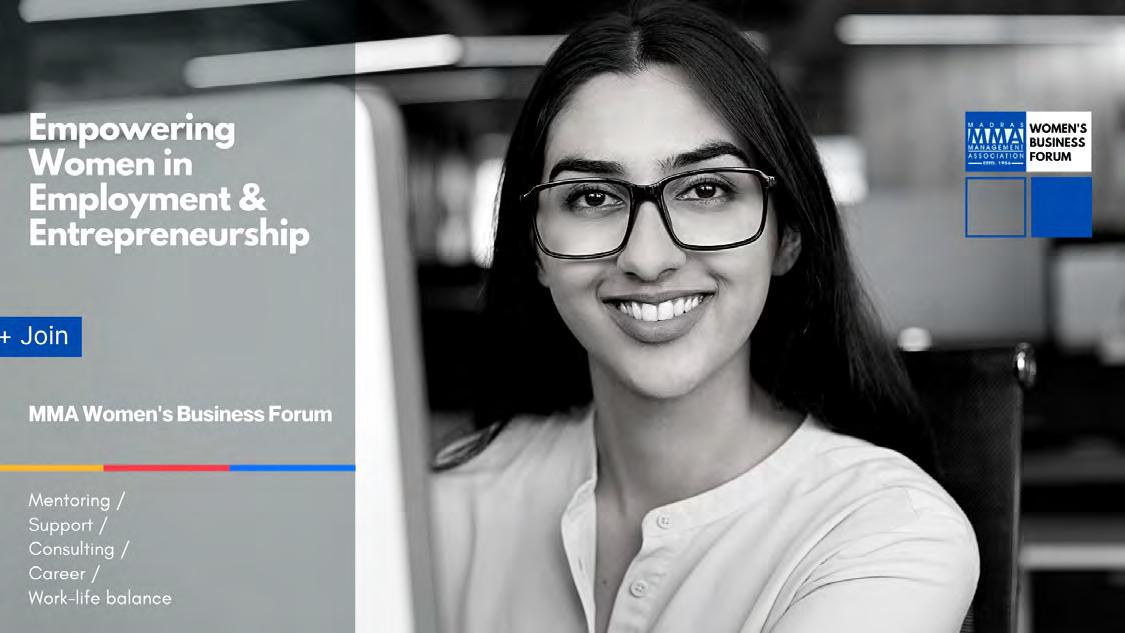
Ramaprasad: Are these levers of influence still relevant and applicable?
Kiruba Shankar: Absolutely.
Praveen Shankar: They are all the fundamentals. You cannot survive without them. And you cannot fake them. One of the key levers is consistency. I can't decide to be a nice guy today and an erratic person tomorrow.
‘Commitment with consistency’ is one of the key levers that puts all the levers together.
 Dr N Ravichandran, Author
Dr N Ravichandran, Author
In this country, when you visit a temple for religious purposes, the more hardships that you go through, the more you enjoy it. This is the general mindset. We all come back and say this is the least we should do for the divine grace that we seek for. This is how every temple in this country has operated. When Mr. PVRK Prasad was the Executive Officer of Tirumala Tirupati Devasthanam (TTD), he used to say that the main corridor where the temple is there, used to look like a perpetual choultry. Devotees used to wait for 16 or 18 hours without any information and clarity on what was going to happen.
Somewhere down the line, thanks to the civilisation and administration, attempts have been made to make the process very enjoyable. That's the time where we are in today. Organizations talk about customer centricity. For the first time, an organization like TTD, which is the custodian for this temple, started thinking
Experts have an insightful discussion on the scientific approaches, innovation and technology behind managing TTD and replicating its successes to other pilgrimage hotspots.
in terms of not only providing dharshan, but making it a little bit more enjoyable, nice and pleasant experience. This is where the administration of the temple becomes more important. Changing the paradigm from ‘have a dharshan if you can,’ approach to ‘facilitating the process of dharshan’ is a fundamental transformation that has happened.
In management, there is a whole spectrum of organizations. Some of them are purely for profit, some purely for service, some for not profit, some societal and some social organizations. Usually, the research on social organization is relatively low. TTD is an outstanding example of a social organization, which has done exceptionally well. It is not a small organization, because Lord Balaji earns every day and that's a lot of money. It is the custodian of the largest reservoir of gold—they hold 800 metric tons of pure gold. Therefore, we are talking about an extraordinary organization. We thought we would add something to the literature, so that people in India as well as outside can understand the enormity and complexity associated
in managing this organization. Our book purely looks at the entire organization from an administration point of view.
Dr S Venkataramanaiah, Author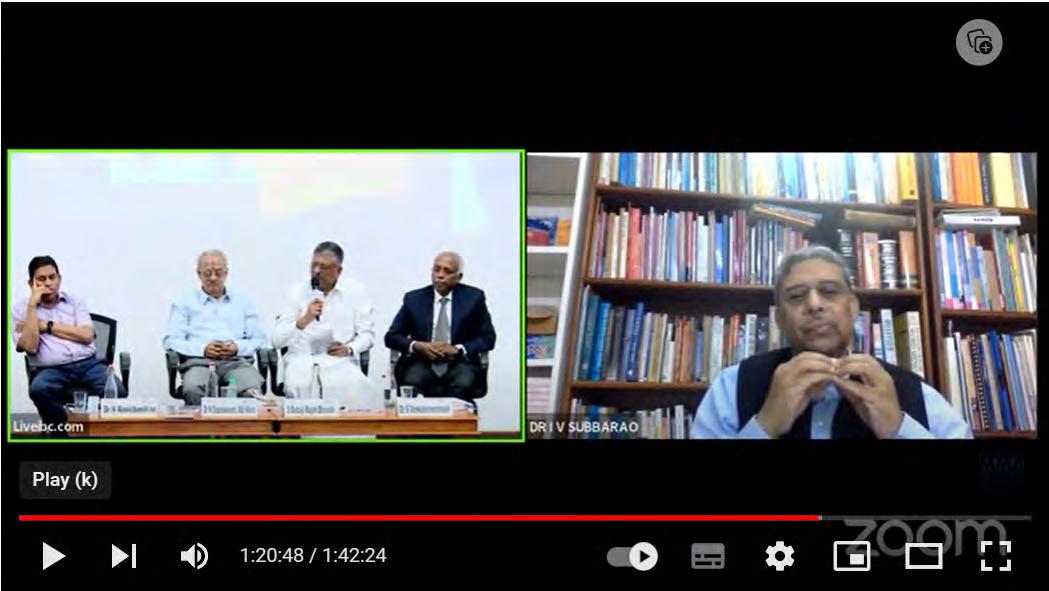
In the Tirupati Tirumala Devasthanam, managing the high volume, complex flow is a very big challenge. The way the organization has shaped up over the generations is evidence of their proactive approach. The late IAS officer Mr. PVRK Prasad, when he was the EO of TTD (between 1978 and 1982) initiated a number of reforms. He walked through the stretches and saw the difficulties of the pilgrims carrying their luggage. He initiated the luggage handling system which now has shaped up in a very big way.
There are continuous changes and improvements happening in the queue management. At one point in time, the entry and exit were in same place. In the next phase, entry and exit were made separate. Today, they have three channels to have the dharshan. Of course,
There are continuous changes and improvements happening in the queue management. At one point in time, the entry and exit were in same place.
you can't duplicate Lord Balaji but you can make the pilgrims' form three channels. In the queueing theory, the servers can be multiplied, whereas here, the server cannot be multiplied. Only the demand side can be channelized. This is a simple example but putting this into practice is the most difficult thing. Tirupati laddu is GI certified. There are challenges in protecting against the misuse of this certification. TTD continuously innovates and fosters creativity. On the one side, they have to handle the pilgrims. On the other side, they have to manage an employee strength of more than 20,000. They follow the best practices in funds
management, including digital practices. As the entire world is moving towards outsourcing, TTD also outsources various functions including transport, laddu making, health and hygiene, sanitation, etc. The way they managed the covid situation in an exemplary manner speaks of their management skills.
Anybody who visits the temple can voice their concerns. There is also a provision called, ‘Dial your EO.’ Through such innovations, they connect the stakeholders. Everybody who visits the temple now gets a gift of one free laddu. They handed over transport services to APSRTC way back in the 70s itself. They are considering getting away with the VIP dharshans. Modifying these practices is a big challenge.
Iwas given a privilege by the Lord Himself for serving not only Him but also all His devotees. That's how I look upon my years in TTD. It just happened that I landed in Tirupati from USA, having done a PhD in education. When I went to the Chief Minister for seeking what I should do next, I thought he would ask me to be the Education Secretary, but he said, “There is a temple in Tirupati. I would like you to manage it.” I had never dreamt that I would be given this kind of a privilege. It was the turn of the century 1999 and I took charge on the first of January.
What I found when I joined was that it was a very complex organization and it required a lot of study to make it a little more pilgrim-friendly. During my tenure, I had the privilege of discussing with Dr. Ravichandran and Prof Sadagopan from Indian Institute of Science, Bangalore, and a number of things happened. I wondered, ‘Why should the pilgrims be confined to the
halls and other spaces, with no certainty as to when the darshan would take place?’ It triggered a thought in me and we just happened to have an Operations Research Society chapter being opened in Tirupati at that time. Professor Sadagopan had come and I was also a participant in that. Over coffee break, we discussed and came up with the idea that we should make some changes to the dharshan experience.
In the year 2000, daily, there were 30,000 to 40,000 pilgrims on an average. Traditionally, as Dr. Ravichandran said, our mindset has been that we must do tapas to see God. But I felt that tapas can be in different forms. It may not be in this kind of a form, where you have to undergo hardship and have a fleeting glimpse of the Lord in a very difficult environment. Twenty-three years back, technology was not so advanced, yet we tried to use technology to transform some of the processes.
The Tirumala Tirupati Devasthanam has a documented history and it’s a temple like no other temple. For a millennium, the daily rituals have been going on in the temple. It's very unusual for any temple to have grown from a small temple on the hilltop, to what we're seeing today. A lot of kings have contributed to it. I went and met the gazetteers off Chittoor. We found a lot of interesting accounts of the collectors of Chittoor writing about how they used to feel the vibration, when they were at the foothills of the Tirumala hills. Even the British administrators have
What I found when I joined was that it was a very complex organization and it required a lot of study to make it a little more pilgrim‐friendly.
documented the kind of power, vibrations and spiritual aspect of the temple, which the I think is very unusual.
It grew as a social organization subsequently. From 1930s onwards, the TTD took over and the administration became streamlined. With each successive executive officer, something new has happened. I felt very thrilled when I had to take oath before the Lord. There is no other position in the government where you actually stand and say, “I report to you, the Lord and that I owe my allegiance to you.” I got a badge made for all the employees with the words, 'There is no other nada (Lord) except Venkateshwara himself,’ to build a committed team.
There are, of course, new directions for its further improvement. Seeing the kind of images of the temples and the pilgrimage experiences which we have traditionally been used to, I think, they have to radically change. The change is happening. We see the changes happening in Varanasi and in other temples across the country. There is a lot of emphasis on hygiene, better management, sanitation and in ensuring that the experience of the pilgrims becomes more satisfying. Temples in India have been the centres of cultural regeneration and cultural transmission of values. So, temples are social organizations. Both the kings and the devotees have patronised them. We must ensure that they are better managed and the management aspect is very crucial.
In my tenure, I made it very clear as to what should not change and what should change. What should not change is the continuity of religious rituals and the sanctity which has been built up over the years. Also, the basic temple structure and architecture should not be changed. We have no right to break down some walls
We should also learn from our failures. A devotee from Bosch, the German manufacturing company, volunteered to try out a laddu making machine. I was fascinated by that concept by which you don't touch the laddu with hand.
because pilgrims find them inconvenient or to alter the heritage inherited over the years. What needs change is the management of pilgrims, their logistics, accommodation and how they stay.
We went into the nitty-gritties. During my inspection, I found that the area where laddus were made was very greasy. We had to just make sure that that place was hygienic and that it should be cleaned very thoroughly and periodically. Many devotees from the corporate sector volunteered for help. We involved Hindustan Unilever. They gave us new kinds of detergents and pumps, with which, we could clean the area very quickly, with very little turnaround time.
We should also learn from our failures. A devotee from Bosch, the German manufacturing company, volunteered to try out a laddu making machine. I was fascinated by that concept by which you don't touch the laddu with hand. The laddu was made, it passed through a cylinder and then dropped into polythene bags. There was standardization and hygiene but it failed, because the laddus came out too hard. So, we went back to the manual way of processing but we ensured that it was hygienically done. We used OR theory and introduced the wristband concept. Now we have advanced technology and probably many more
things have been added, but in the year 2000, that looked too radical and for the organization to accept something which we introduced, was getting a difficult.
We also introduced the E-Hundi concept, using technology, where you don't need to come to the temple but you can open the website on a particular day—your birthday or somebody's wedding anniversary and if you just want to contribute, you can pay and contribute to the Srivari Hundi. It’s important that a social organization has to involve the stakeholders. We also thought that when the pilgrims come there, if they are offered to do some service, like cleaning the place or serving the pilgrims at mealtime, etc, it would involve the pilgrims in a big way and build a good community of devotees who would feel involved in this. Thus, we brought in Srivari Seva, but I understand that it had some unintended consequences. Of course, anything can be misused.
Dr N Gopalaswami, Former Chief Election CommissionerIfirst went to Tirupati in 1957, and as part of the family visits, I have been going there regularly once in three or four years. I remember well a visit of mine in 1977. I had come on a very short leave from Gujarat and wanted to get back soon. My wife and I landed at 10.30 am in Tirumala, went to the counter which was in those days opposite the main entrance, bought ticket for Rs 50 rupees, went in the queue, had a dharshan and came back at the end of one hour, after which I went to meet a relative 30 kms away and came back in the evening to Tirupati around at 8 o'clock.
I knew there was a last dharshan at the Amma Vari temple, which is called ‘Ekantha seva.’ We went at 8.30 pm, had an excellent dharshan and sat there for 40 minutes. They served us a very special prasad. We left
for Chennai at 9.30 pm and reached by 1.30 in the morning. You can't imagine this today. A dharshan in 15 minutes is just not possible.
But those were days when the number of pilgrims was far less. Today, around 80,000 people come every day and it's mind boggling. I remember my batchmate PVRK Prasad who, as in charge of TTD, did a lot of improvements and over a period of time, all the executive officers (EO) have added to that in their own way. Today, the Tirumala temple is remarkably different from what I saw in 57. It is very clean and well maintained. The hygiene and sanitation are excellent. This has been possible only because the successive EOs have taken a pilgrim-centric approach to the entire administration.
It is one of the finest places to have a dharshan. Of course, the difficulties are still there and that is because of the increasing number of visitors to the temple.
I read that taking a cue from TTD, many temples improved their administration in India. I remember Mr. Jagmohan, when he was the governor of Jammu and Kashmir, got the acts suitably modified for Vaishnav Devi temple and made provisions to make the dharshan much better. I have gone there also and have really seen the changes. TTD has truly set an example by its initiatives.
Looking at the number of wings and activities of the TTD, it is a moot question whether even a super human being as the executive officer will be able to pay attention to every one of those wings.
TTD now as a social organisation, is into many other activities. It is very heavily into education. They run a medical college, an engineering college, an arts college and 7 or 8 schools, including a school for the disabled. They also help Balaji temples come up in other places. As TTD is helmed by government officials, some chairman or the political officers of the state might have contributed to this decision of asking TTD to go into these areas.
I have problems with that, for the simple reason that what is essentially a state activity has been handed over to a religious institution. It definitely leads to a reduction in the attention of the management towards issues relating to the temple. Looking at the number of wings and activities of the TTD, it is a moot question whether even a super human being as the executive officer will be able to pay attention to every one of those wings.
In Tamil Nadu, running the ‘Amma canteens’ has been handed over to the Corporation. Should the Corporation start feeding the poor or should it look after water supply and drainage? It's been very convenient for the governments to hand it over to the Corporation, so they don't have to reflect it in their budgets and answer anything in the assembly. Supplying a meal at 10 rupees, the Amma canteens incur a heavy loss.
Their outstanding payment of bills is over 500 crores. The question is, should the Corporation be allowed to undertake that and are they adequately compensated? Similarly, I have my own reservations on whether the TTD should be burdened with so much of social work. I'm not talking about any service they render to the pilgrims.
Mr S Babaji Rajah Bhonsle, Hereditary Trustee, Thanjavur Palace DevasthanamIam touched by a quote given in the beginning book. It reads: ‘The diseased praying for health, the healthy praying for wealth; the wealthy praying for power; the powerful praying for peace; the king desiring peace and renouncing life; and the renounced yogi, desiring nothing but good to all, all can be met within the temple and all are attentive to the central, the Divine Law.’ The temple is thus a literal storehouse of the life of the community and without a knowledge of it, life itself is incomplete.
Anyone, like me, who has the opportunity to manage temples, can learn a lot from the TTD administration. I'm also a beneficiary of Mr Gopalasamy’s acts. As Secretary of Culture, he visited our temple at Dharasuram, which is a heritage monument. The renovation of the temple was discussed for more than a decade and we were not able to perform the kumbabishegam (consecration) as there was a litigation. We requested him to look into it. Upon his discussion with CBI, pending enquiries, the renovation was cleared. We went ahead with the kumbabishegam of the temple. He was the first person to fund the temple renovation from the central government. We also got funds for the Rajagopalaswamy temple in Tanjore and got it renovated.
As the Hereditary Trustee of Thanjavur Palace Devasthanam and managing many other temples, I am a bridge connecting people and the government. I have to bridge the aspirations of the people and the rules and regulations of UNESCO and the state government. I entered it when I was hardly 15 years old. I am now in this journey for 34 years. The Tanjore Brirhadeeshwara temple hardly saw visitors, when I inherited. But now the crowd management has become a huge issue.
When we measure results, we have to measure the tangibles and the intangibles. I am also heading certain companies where we are into lean manufacturing with the objective of improving the performance and the bottom line. The tangible results are measurable. But when it comes to intangible things like spiritual activities, it is difficult to measure the results. The objective is to convert the mindset and touch the soul of the people. It’s a very complex administration. In a very challenging environment, temples are managed. For instance, TTD provides subsidy to the Goshalas that take care of 3000 animals, out of which, I understand that only 150 cows are milk yielding.
How we can make it sustainable is a point of debate. But my opinion is that the other cows have given milk all these years and now they have stopped. So, they have to be taken care of, from the people's money and temple funds. Whether it is sustainable or not, the subsidy should continue and it can even be expanded.
Temples, rather than levying compulsory charges on devotees should try to sustain with
will full contributions and income derived out of lands endowed to it. We do not charge
any entry fees, because we see it as the place to preach values. Our challenges are very different from that of TTD. Our focus is on how we can convert our religious institutes to make the people more cultured and inclined towards the cultural aspects. I used to move closely move with Swamy Dayananda Saraswathi.
He would say that a human being is an unpredictable animal. We can predict what a lion or a donkey will do and stay away from it but we cannot predict how a human will behave, at what time and with whom. Only through religion, culture and literature, we can create banks to our wandering mind.
Our main challenge is to manage the land assets. In Rajagopalaswamy temple, the main lintel beam of the Rajagopuram had developed crack. With our departmental engineers, we planned to construct concrete columns along the entrance and I was worried because the concrete columns might hide the view of the statue of Vijaya Raghava, who built the temple. Fortunately, I contacted Dr. Ambalavanan in IIT Chennai and Dr. Das, a structural engineer from Pondicherry.
I brought them and showed them the cracked beam. These two professionals, examined for half an hour and said that we have nothing to do, because the load has already been transferred to the sidewalls of the gopuram and the lintel is not carrying the load. We saved 25 lakhs from their suggestion, which is a big money these days. That is the power of connection with the knowledge sources. We also manage the aesthetics of the temple. I crave to meet people who are more knowledgeable and passionate to do things on the temple front and in the management of social or religious institutions. n
/ When we measure results, we have to measure the tangibles and the intangibles. I am also heading certain companies where we are into lean manufacturing with the objective of improving the performance and the bottom line.

In the past three years, I have had the misfortune of being involved in helping the families of some of my friends—both in India and the US—who passed away suddenly for various reasons like undetected, undiagnosed or untreated health issues, accidents in some cases and other reasons as well. There were at least half a dozen people known to me, who were in their 40s and 50s and 60s. In every instance, I noticed that the people who were dealing with the grief and misery of the loss of the loved ones, had no idea of the person with whom they lived for a long time. They had no idea of what the person was doing, what he was worth and what assets and liabilities he had. In every single case, it takes months, and in some cases, years for the family members to go back and reconstruct their life. It is not just about financial matters.
We have lots of information in our own heads which nobody else knows. It is stunning when you go through the process of helping people who are going through this problem. The last event happened on Jan 8, 2023, and I made a resolution that I am not going to have anyone suffer this sort of problem anymore. I have made it my mission to share information on the 'end of life planning,'
What, how, when and why of End of Life Planning... How to ensure that your wishes, desires, likes, preferences and values are honoured in your absence and how to translate them into a plan of action and information that your loved ones will need to make critical decisions on your behalf.
so people can plan around it and ensure that their own mission and values are maintained or at least known and executed by their loved ones, in their absence.
It's not an entertaining topic, but a very important one. It applies to people of all ages and genders. Nothing is guaranteed in life and things happen beyond our control. It is important that people who are left behind after we leave the earth, have something to go ahead with and not add to their misery they are already in.
‘End of life planning’ is planning for what you wish to happen when you leave this world. They say that only taxes and death are certain in this world. So, record and document everything that you want to see happen when you are not there. You may even leave instructions on how you wish to be cared, even before the end of life, in certain medical conditions. There are legal formalities in these cases, without which, in some countries including India, other people cannot make decisions on your behalf.
EOL planning can be a combination of a physical folder, spreadsheet, document or any other suitable form. It can be a combination of physical and digital also. If
everything is in soft copy and the computer password is not known, it is very difficult to find out the information. It is as good as having no information.
Recently, we could not find a person's Aadhar card. Without Aadhar / proper identity card, it is not possible to cremate the person. In one case, a person died. The wife was in a shock. Both their children were abroad and their contact details-address, phone number, email—nothing was available. It took one full day to trace and contact the children.
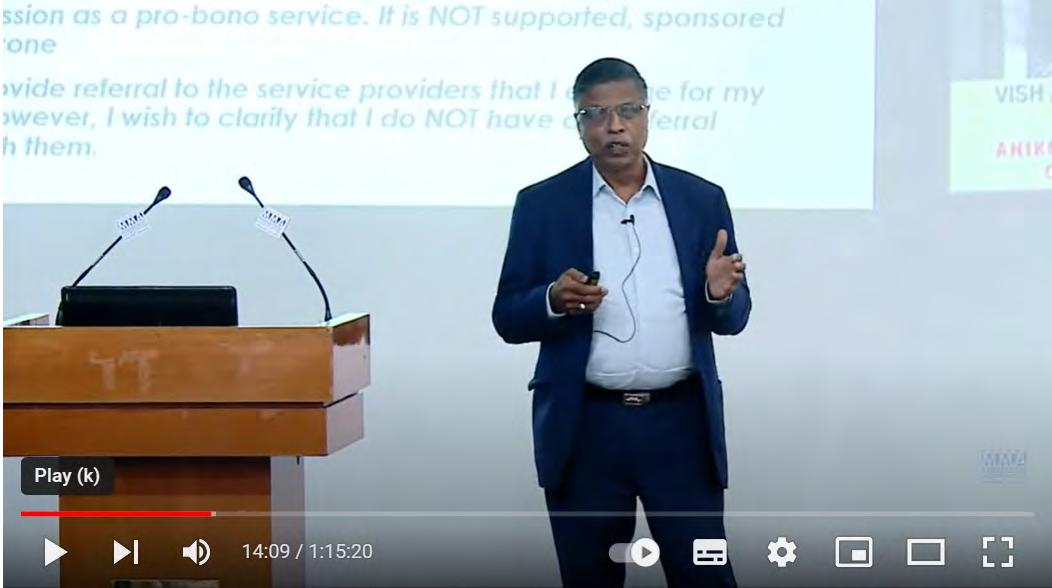
EOL is a moral responsibility towards our family members. You don't want to aggravate their misery by
keeping them clueless. From my experience, it's incredibly agonising to see people not knowing what to do and where to start. Though we cannot eliminate the pain, at least it will help in mitigating the pain. I have seen even educated working women having no idea about their family's financial position.
It is a myth in our society that women don't want to talk about the financial position of the husband. When there is money left behind, it can lead to disputes in settlement unless clear documentation is there. This documentation work may need 3 to 4 weeks of time but it can save tremendous amount of pain and grief and months and years to resolve. Approximately Rs 48,500 crore is lying unclaimed just in PSU banks alone. In life insurance corporations, it could be double this amount. Together, 18Bn$ of money is left unclaimed because people don't know you had something there. RBI has recently started an initiative to encourage the bank managers to reach out to whoever they can, in case an account is inactive.
From my experience, it's incredibly agonising to see people not knowing what to do and where to start.
Mr. Shankar: What is the correct age for EOL planning?
Ideally, a er your gradua on and definitely, a er ge ng married.
With whom, should the information be shared?
If married, with the spouse. It is also preferable to inform children. There are cases, in which both parents died suddenly. Or inform a sibling or a friend.
When a person leaves, does the lawyer come and open the box like in movies?
No. The first thing people ask is, 'Does the person have a will?" If not, somebody—the beneficiary—has to ini ate theprocessofgoingtocourtandprovingthattheyarethe legalheirs.Thisprocessiscarriedoutbyajudge.Youneed good, qualified and specialised lawyers to represent the case.
If there are assets in different jurisdictions, do you need separate wills?
WithinIndia,onewillisenough.IfassetsareoutsideIndia, then those countries may follow a different process. So
separate wills are required for assets in other countries.
What does the new inheritance law state?
From2005,SupremeCourtruledthatallchildrenincluding girl children have same rights in inheritance.
EOL is an emotional subject. How do you broach this topic with the family?
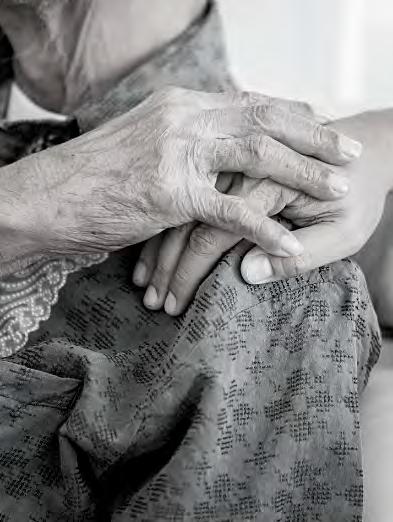

Yes, definitely not a pleasant task but it is important that you talk about it.
Can the documents, once made, be revised / altered?
Yes. Revisit them once a year and some mes, at lesser intervals. Things can change.
A disclaimer from the speaker: I am not a lawyer, tax consultant, financial advisor, insurance agent, an estate planner and an employee of any government. The information is shared based on my learning as a guide in helping people and does not purport to be a legal document or expert advice.
